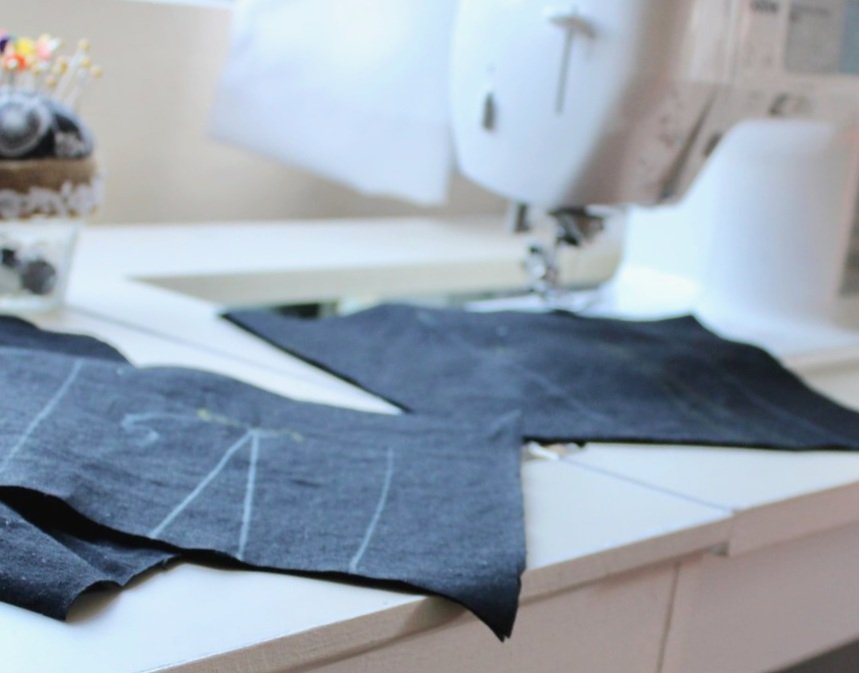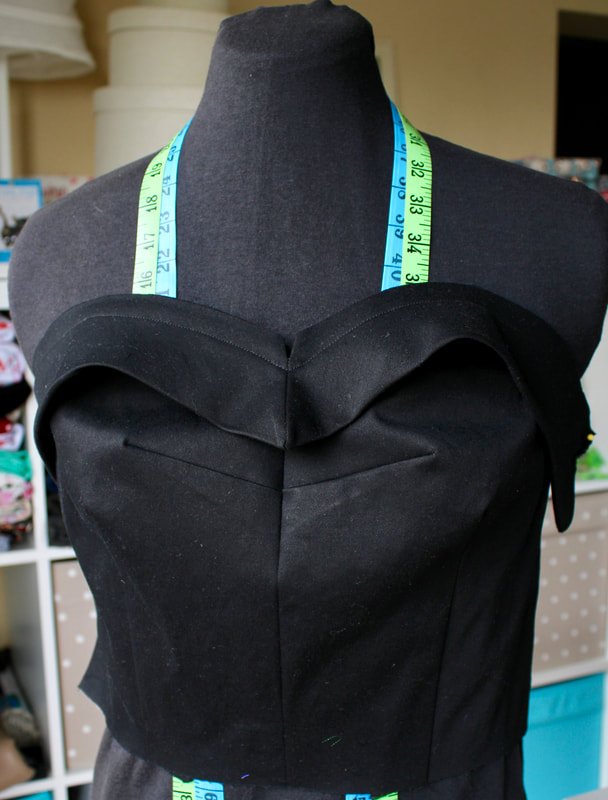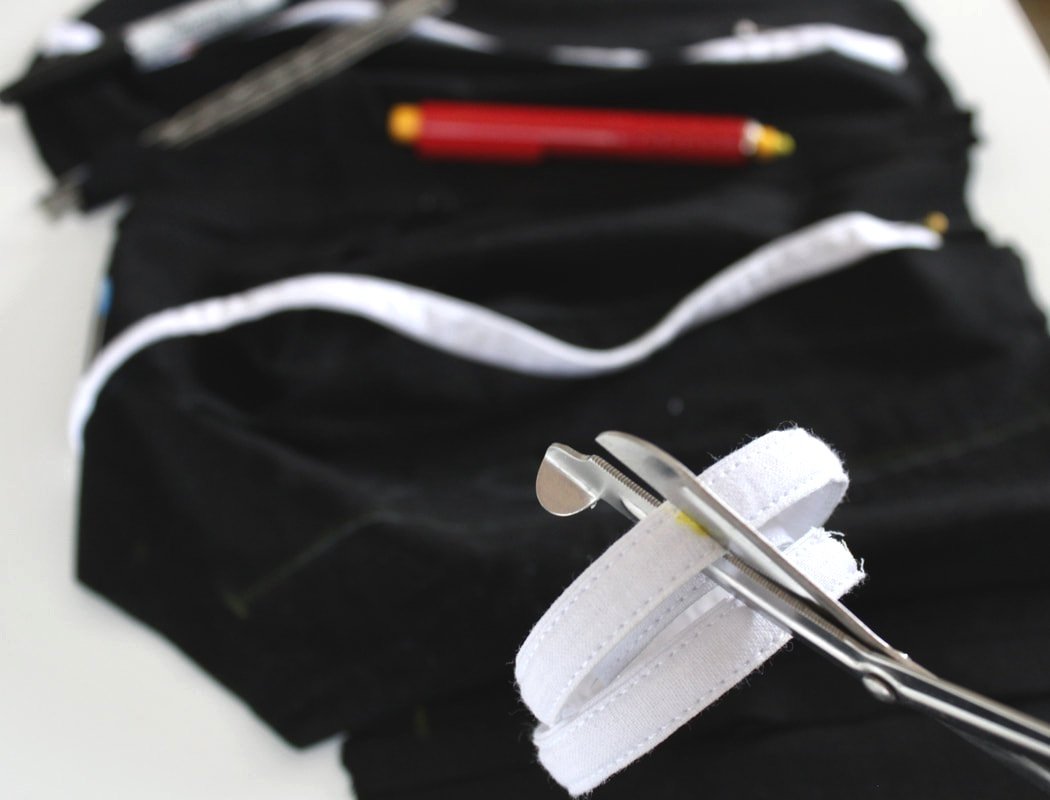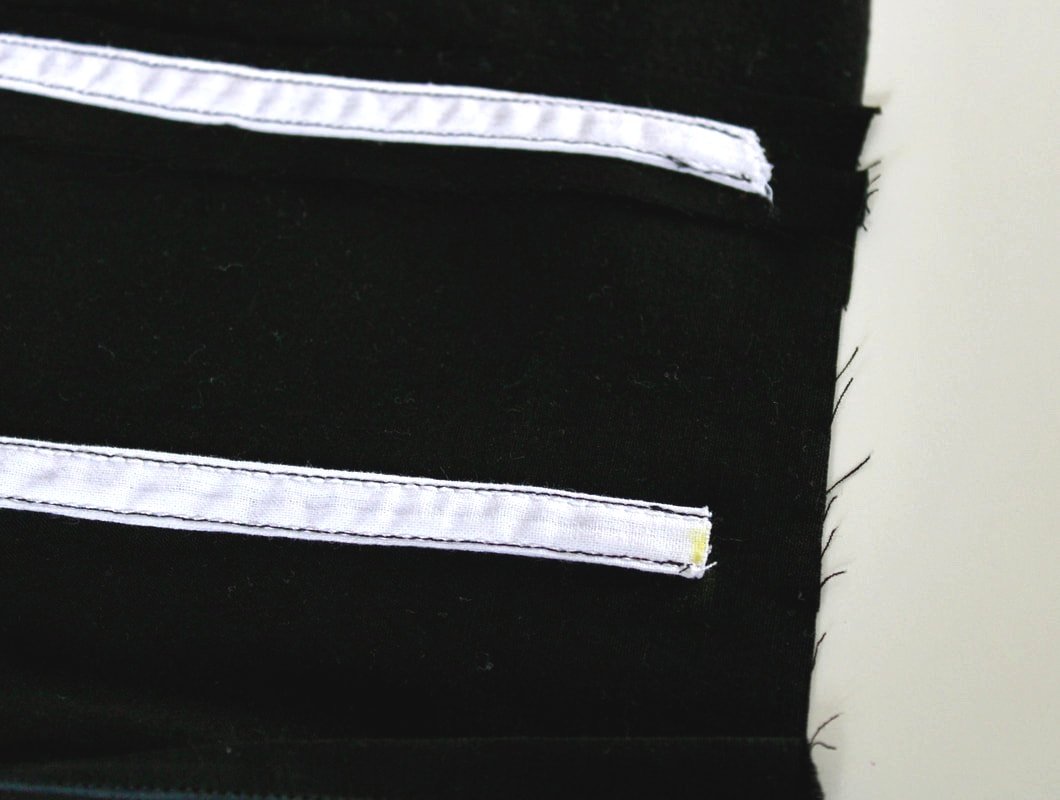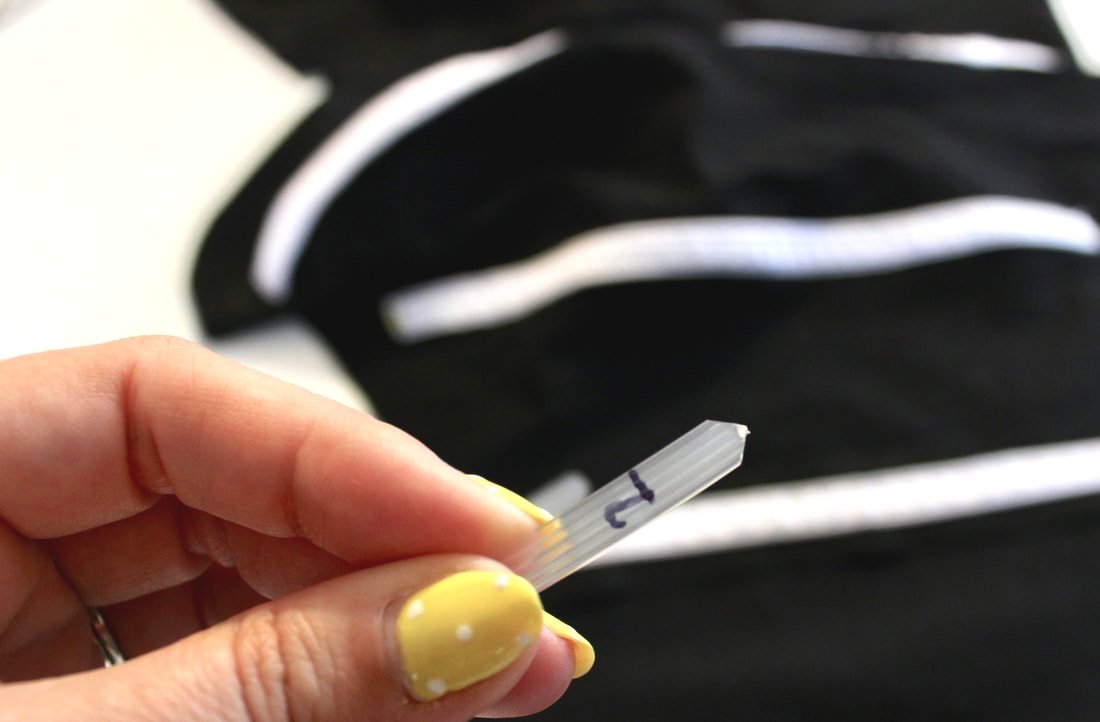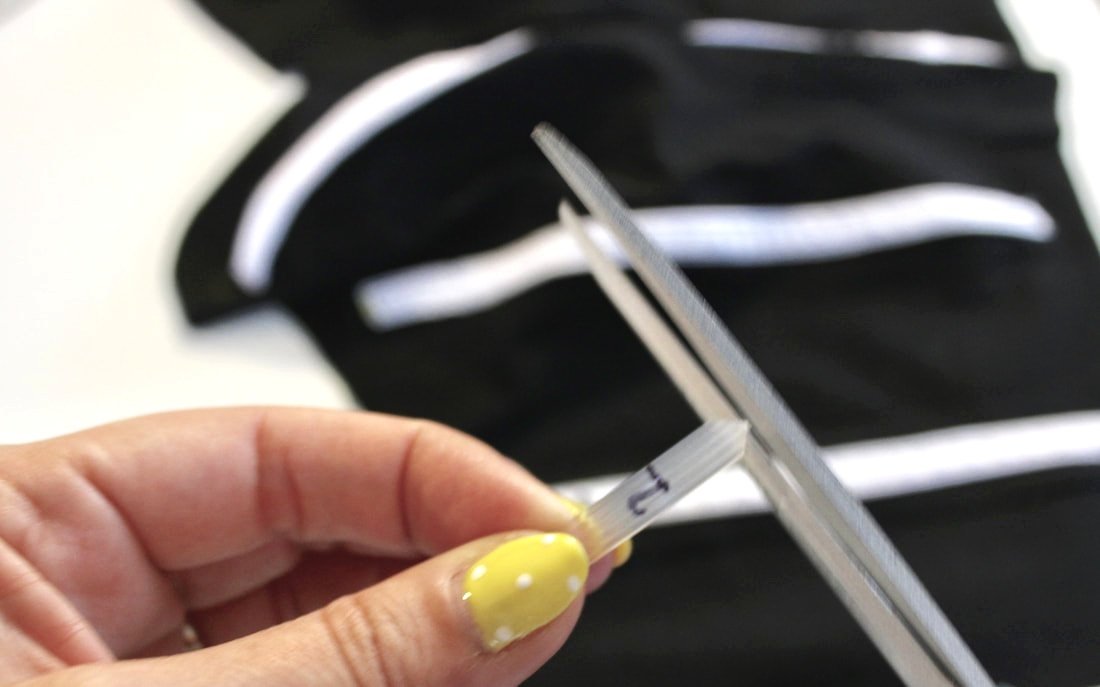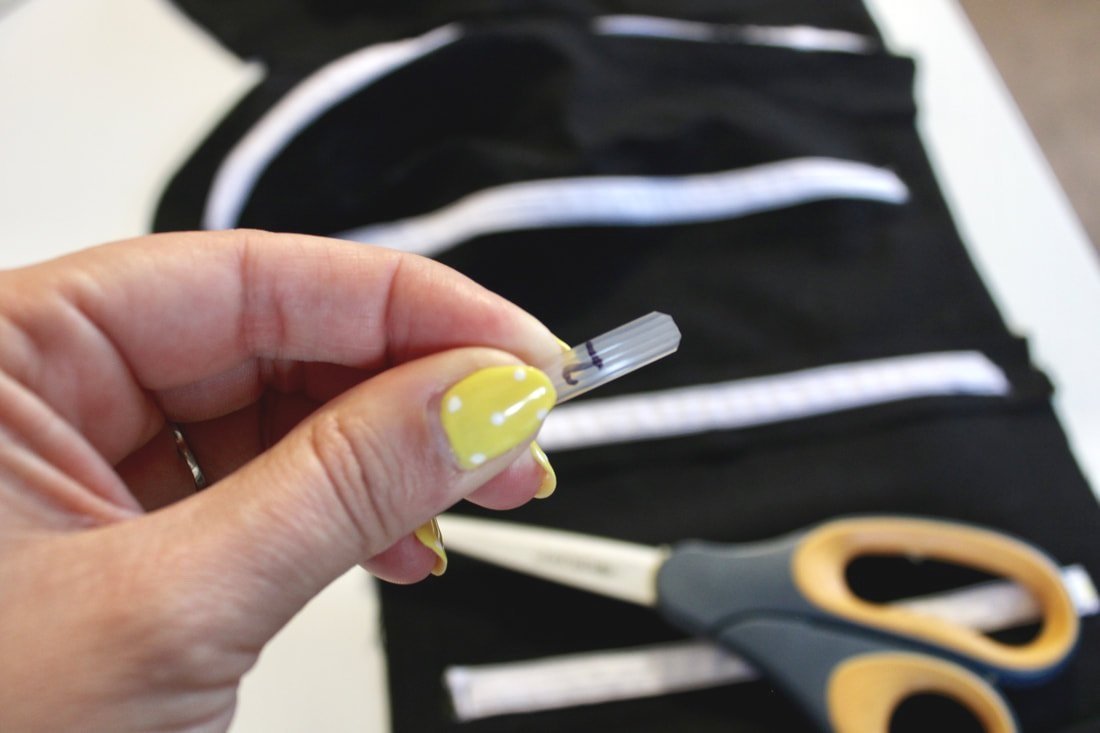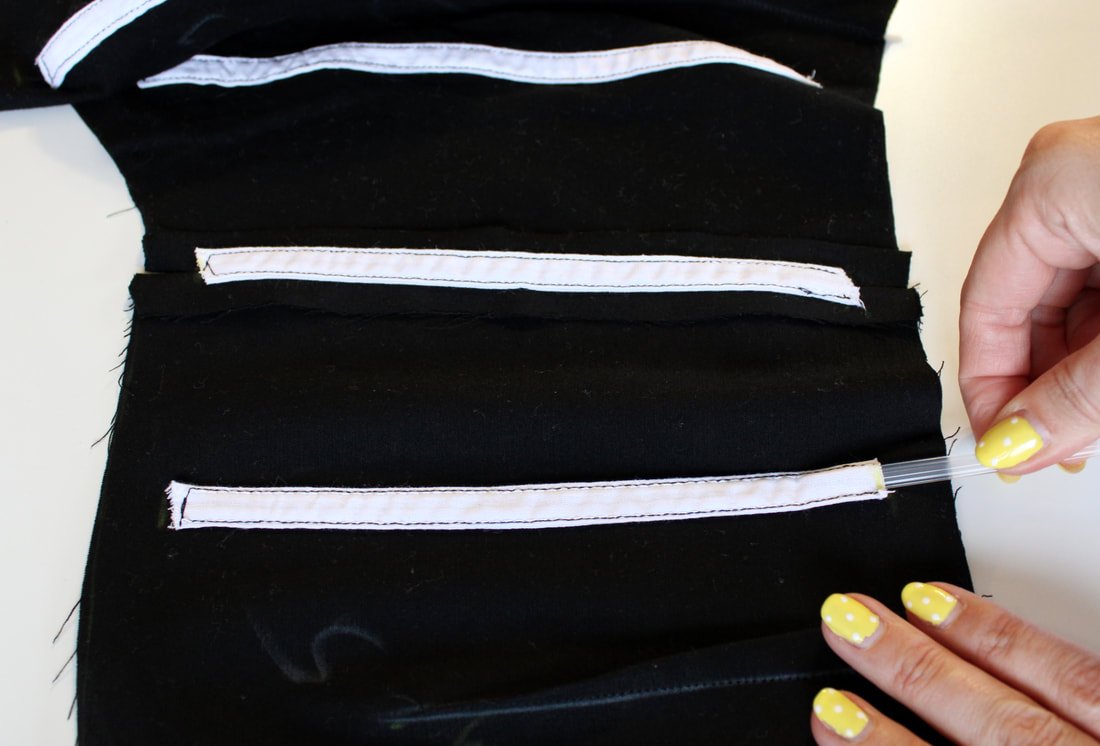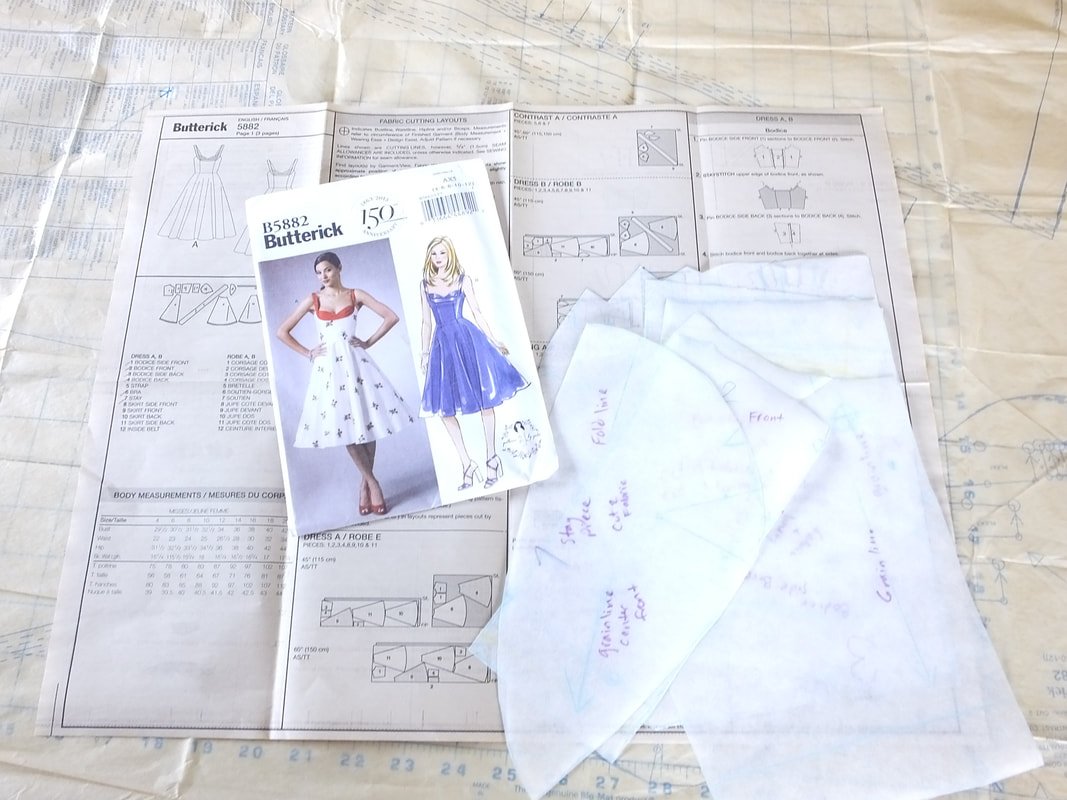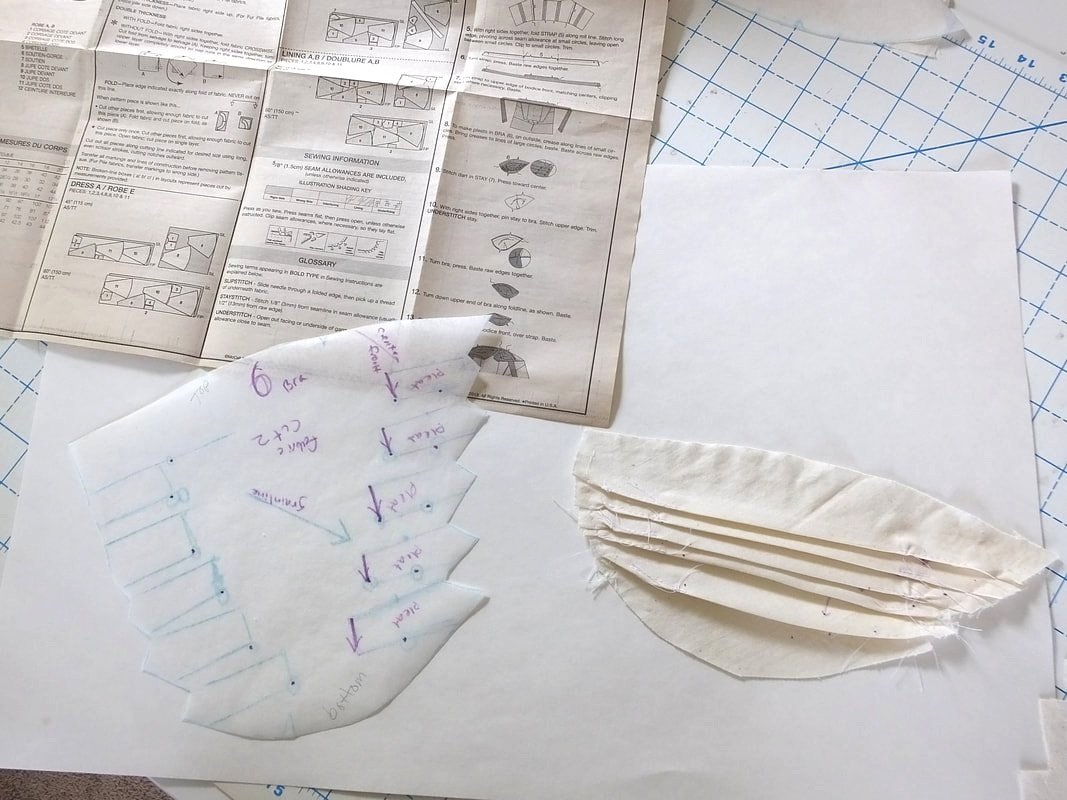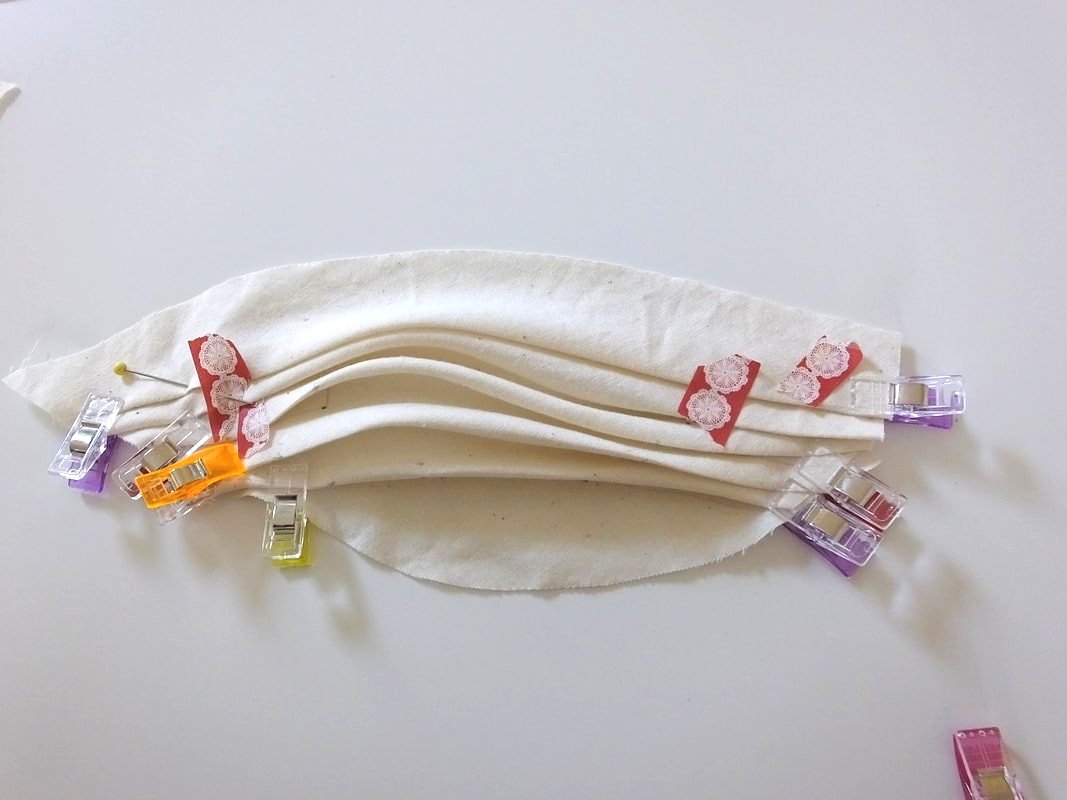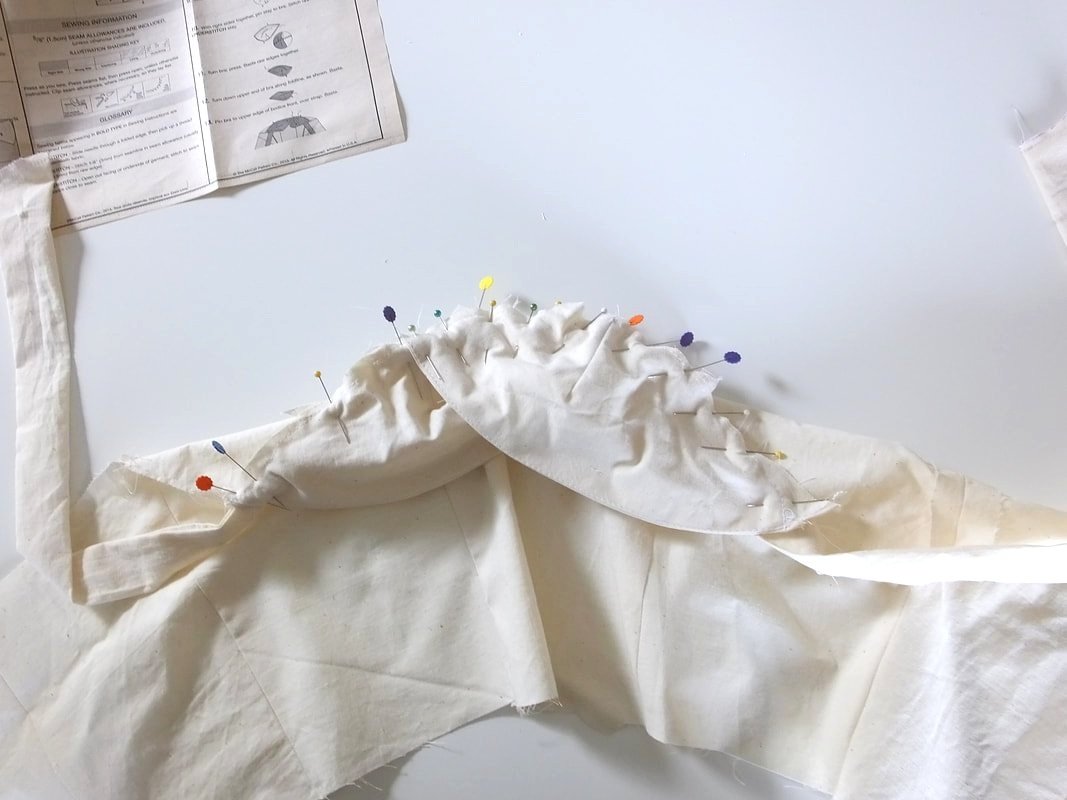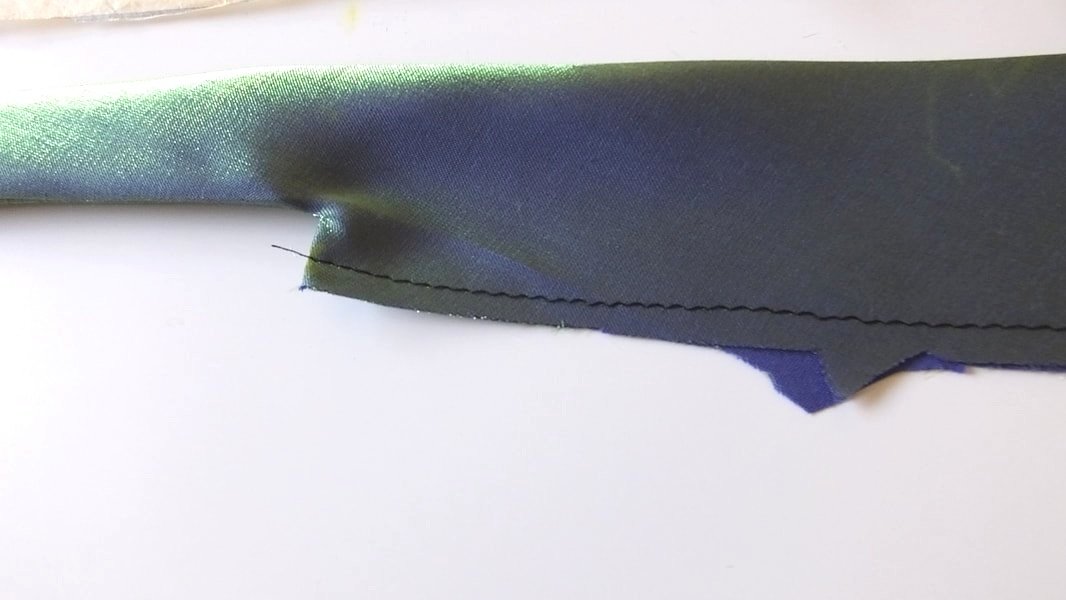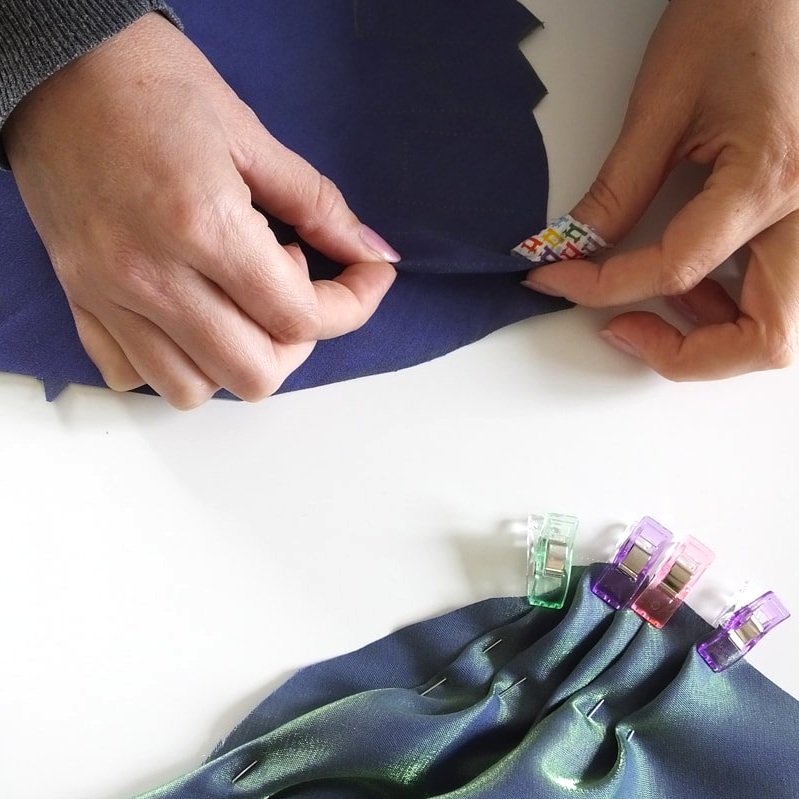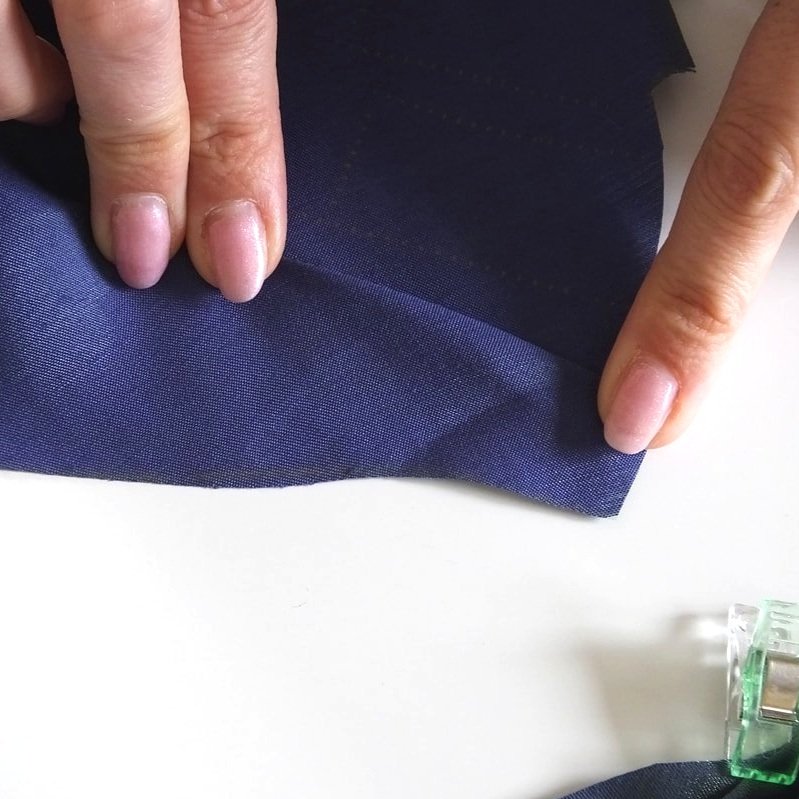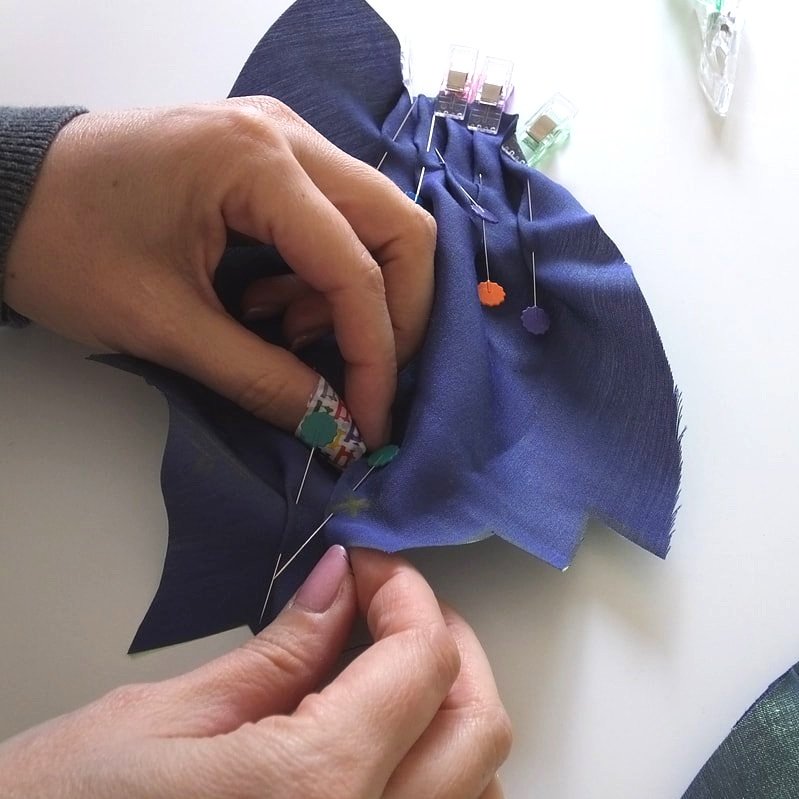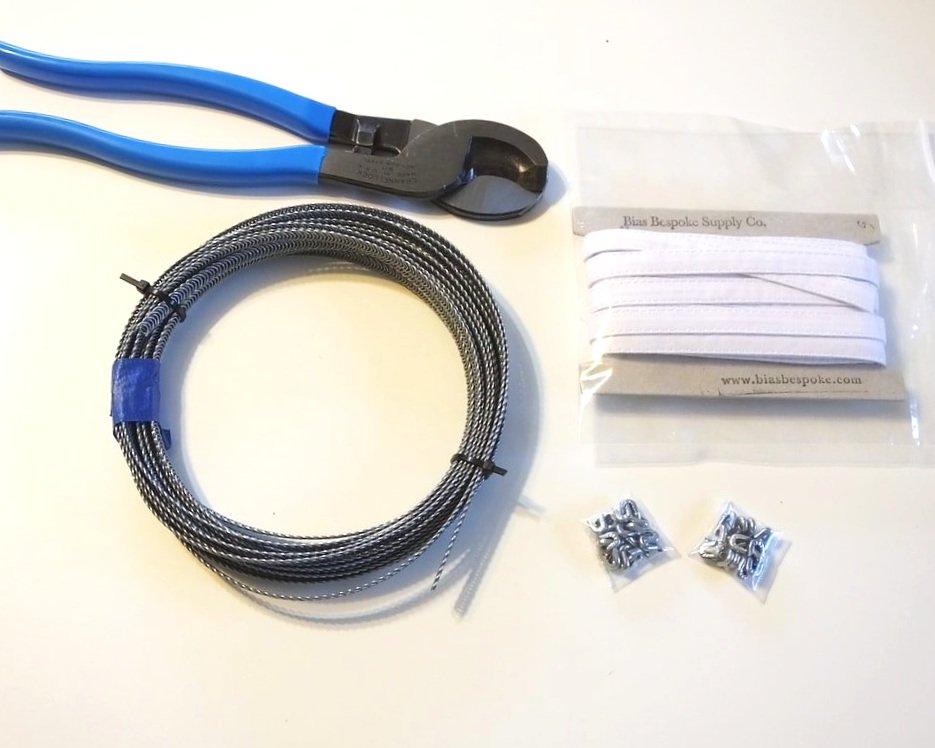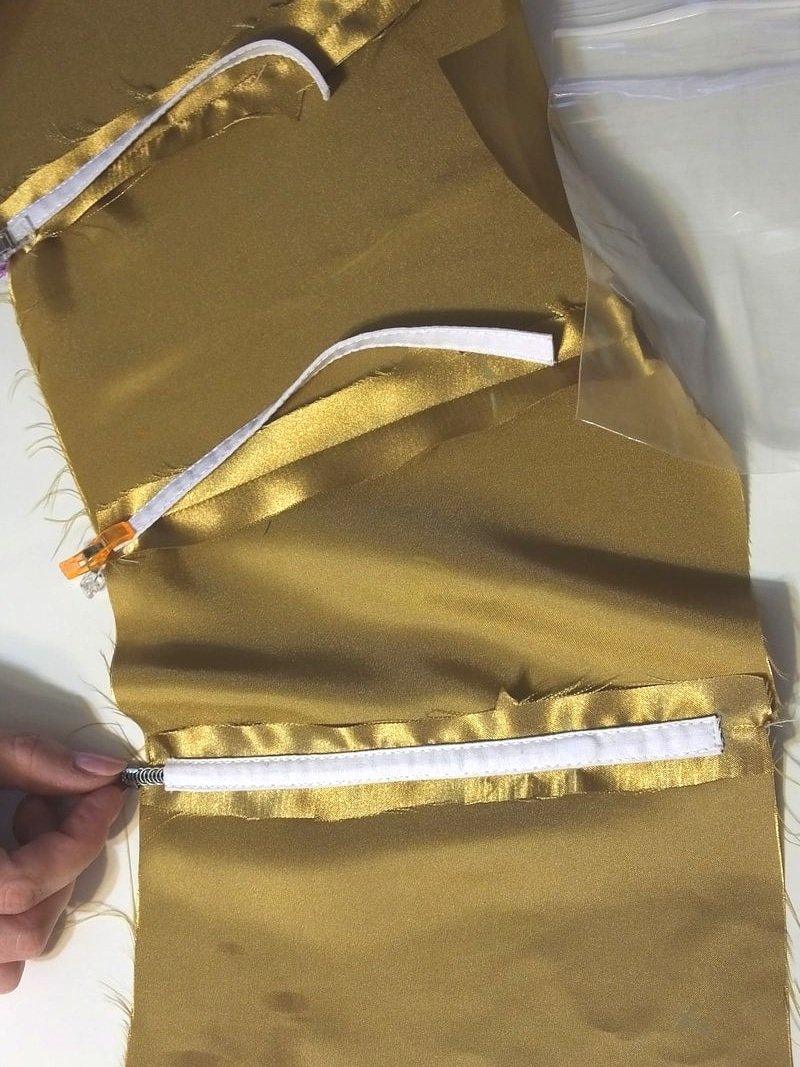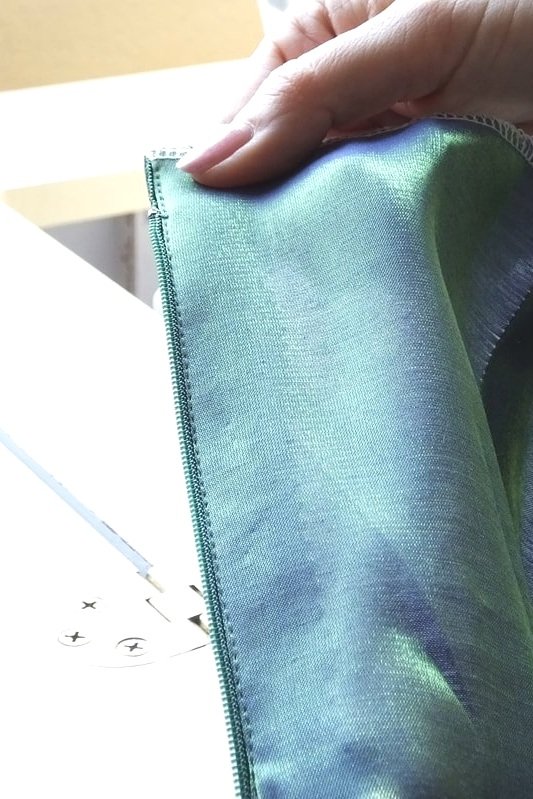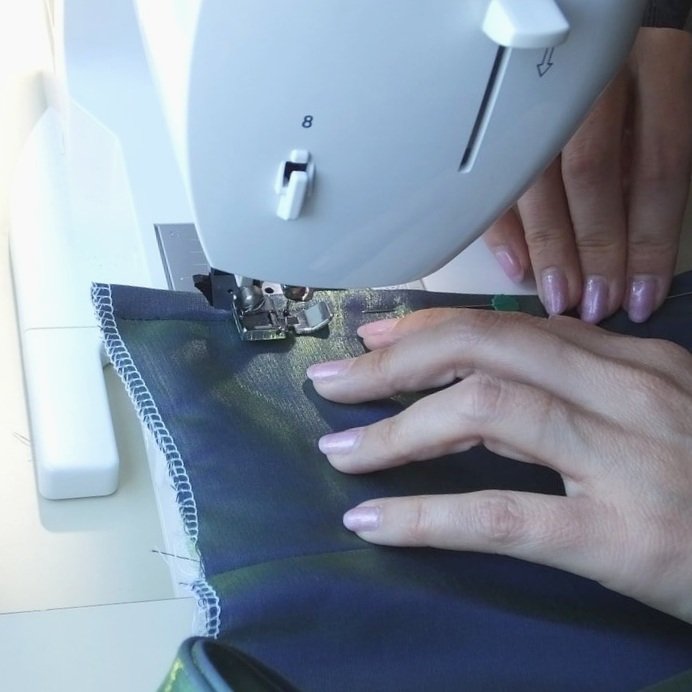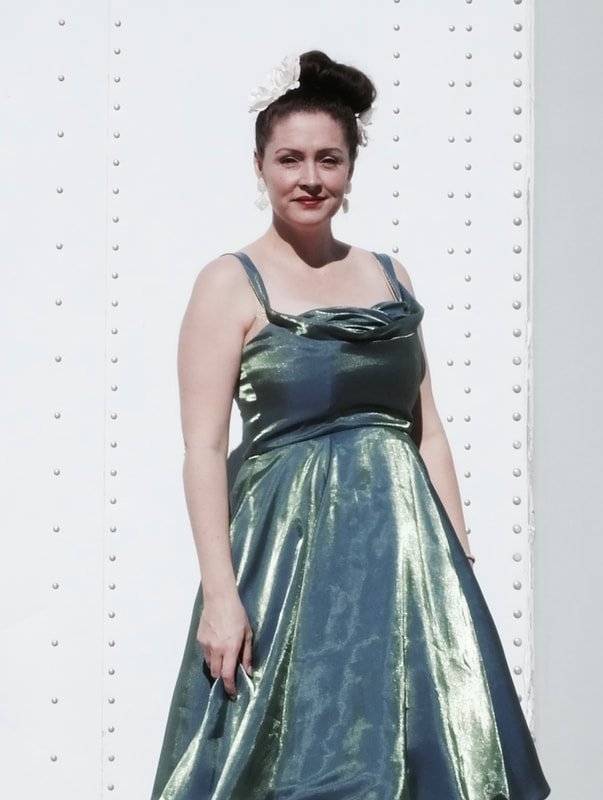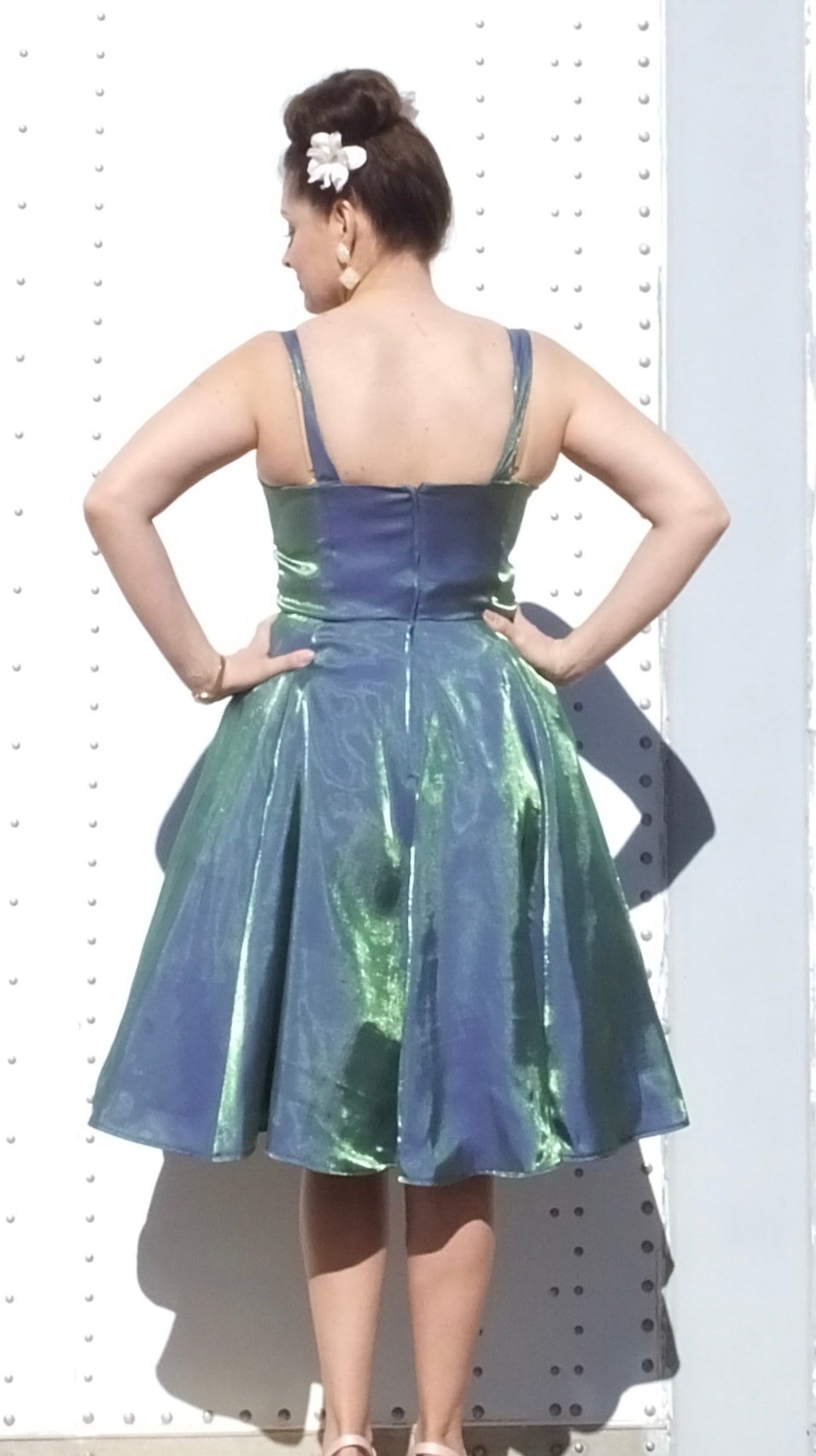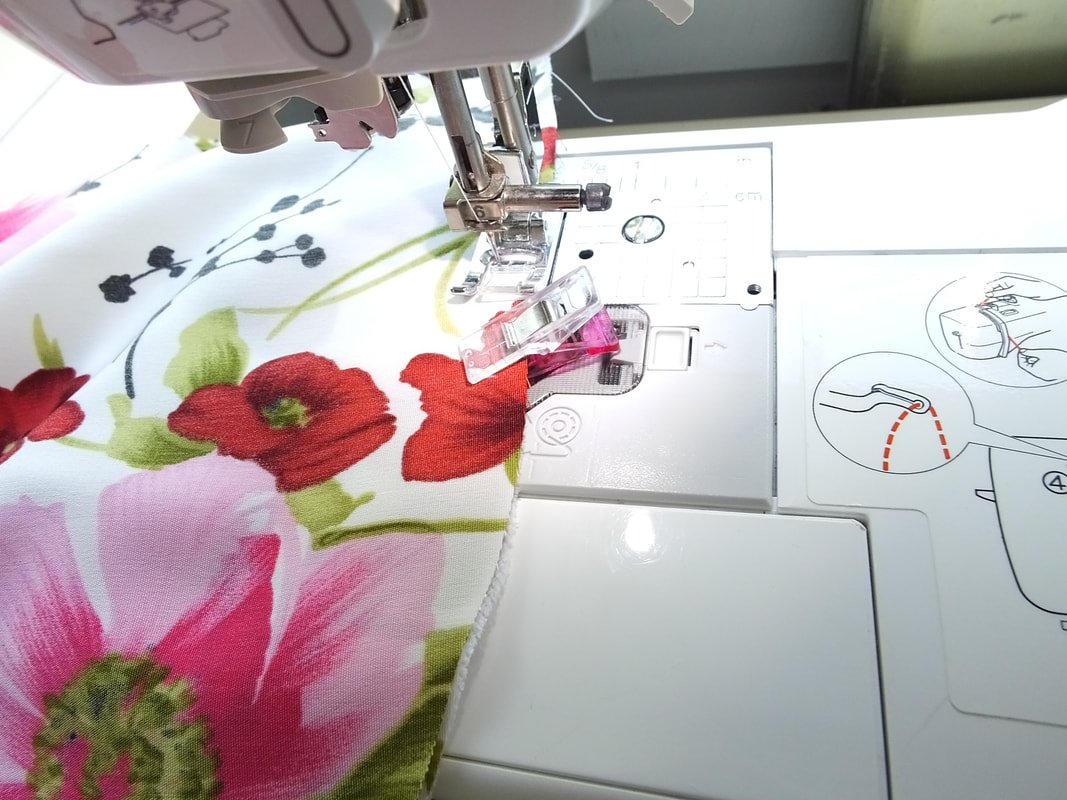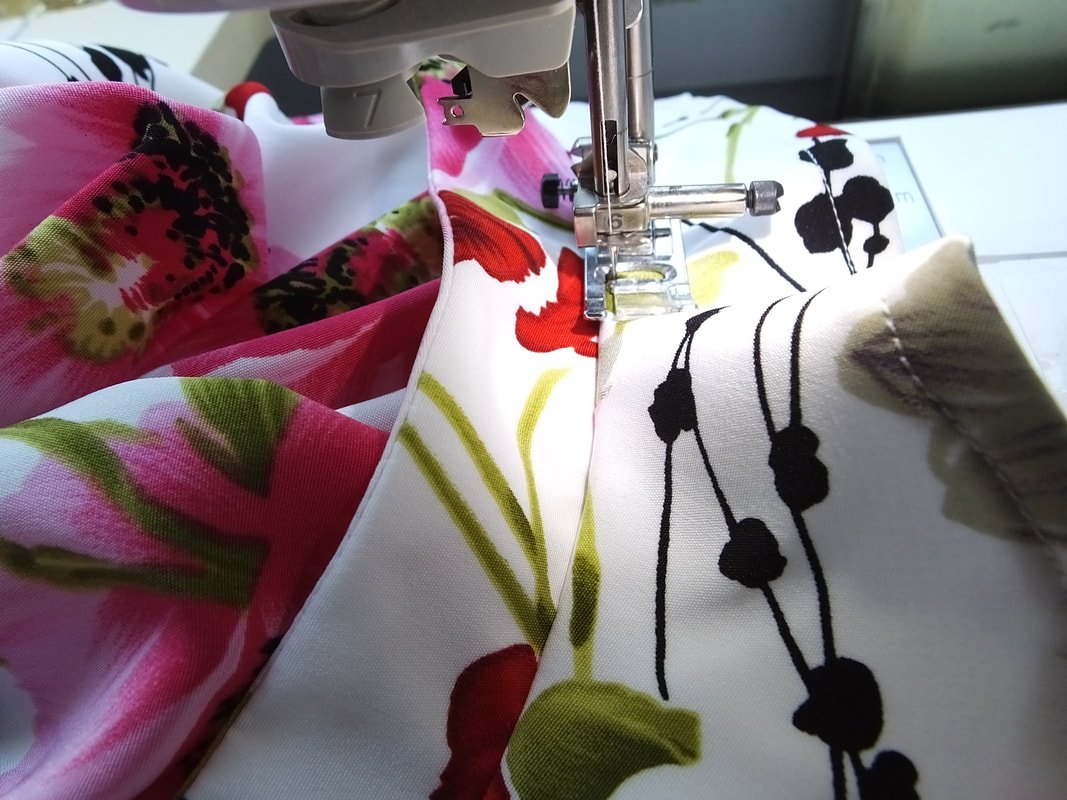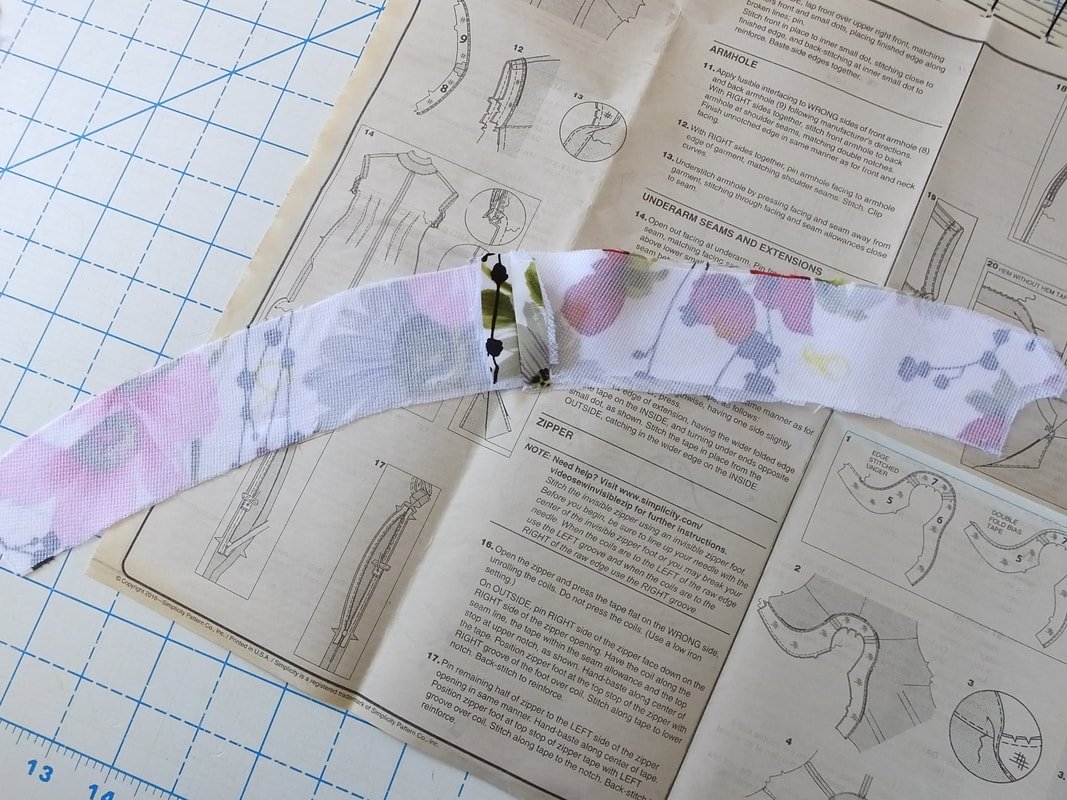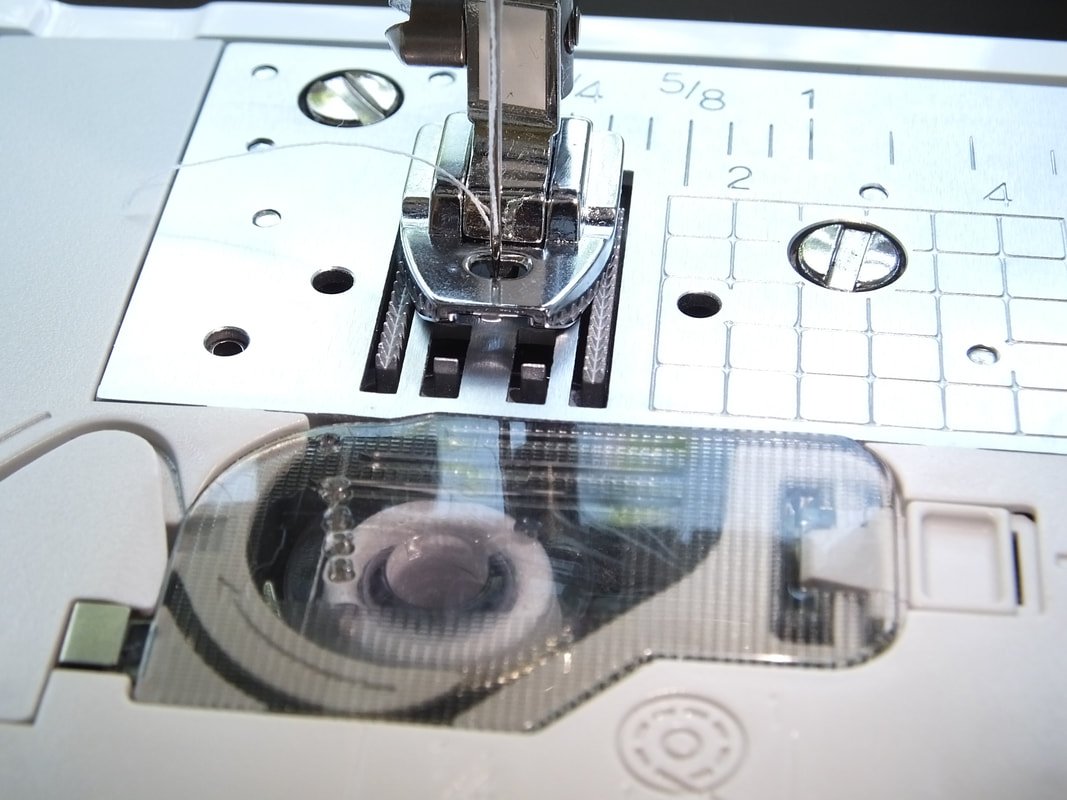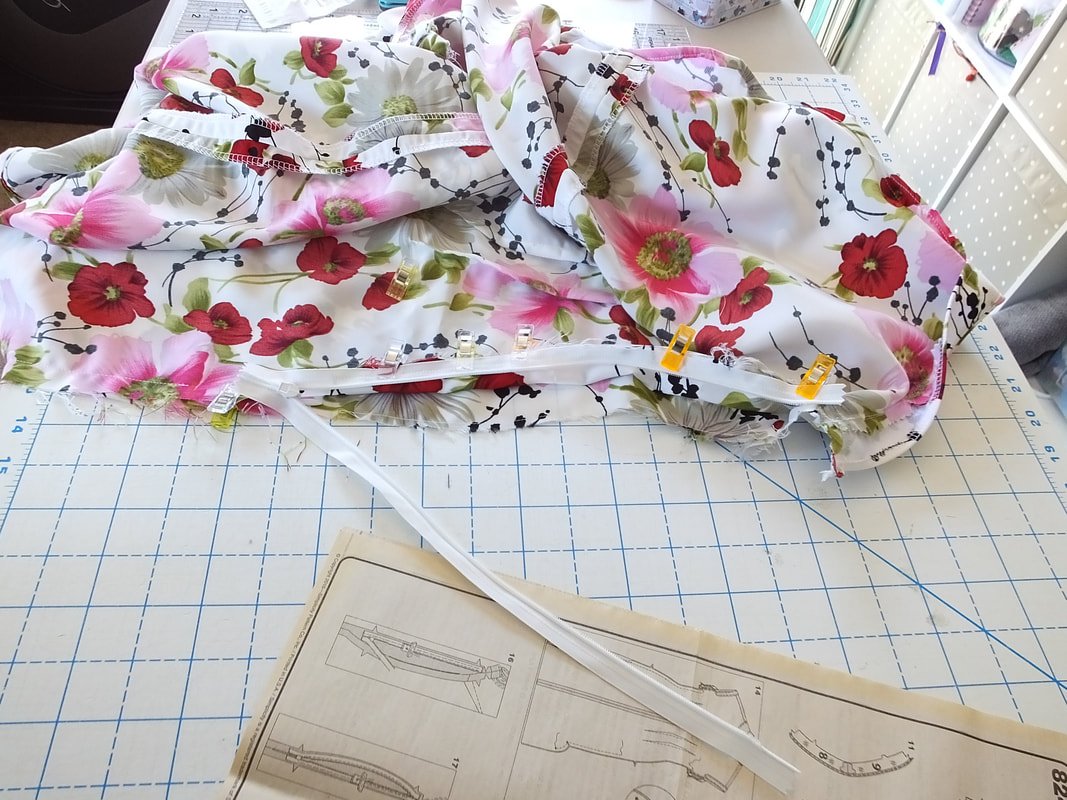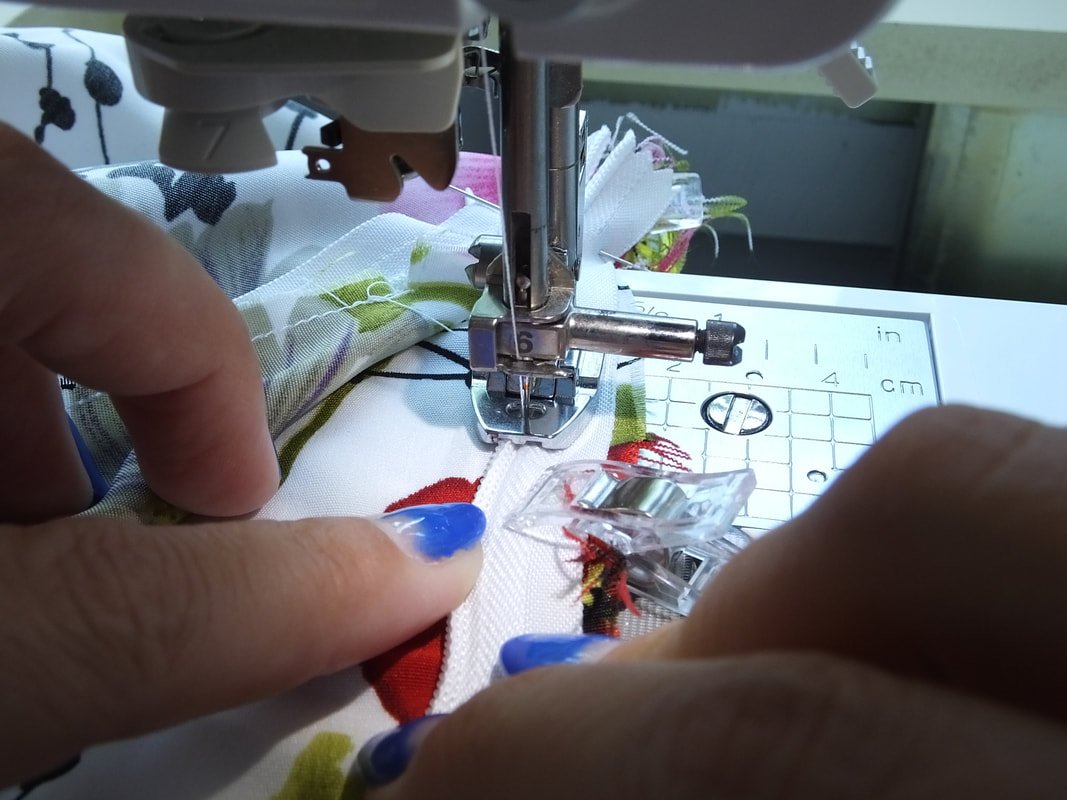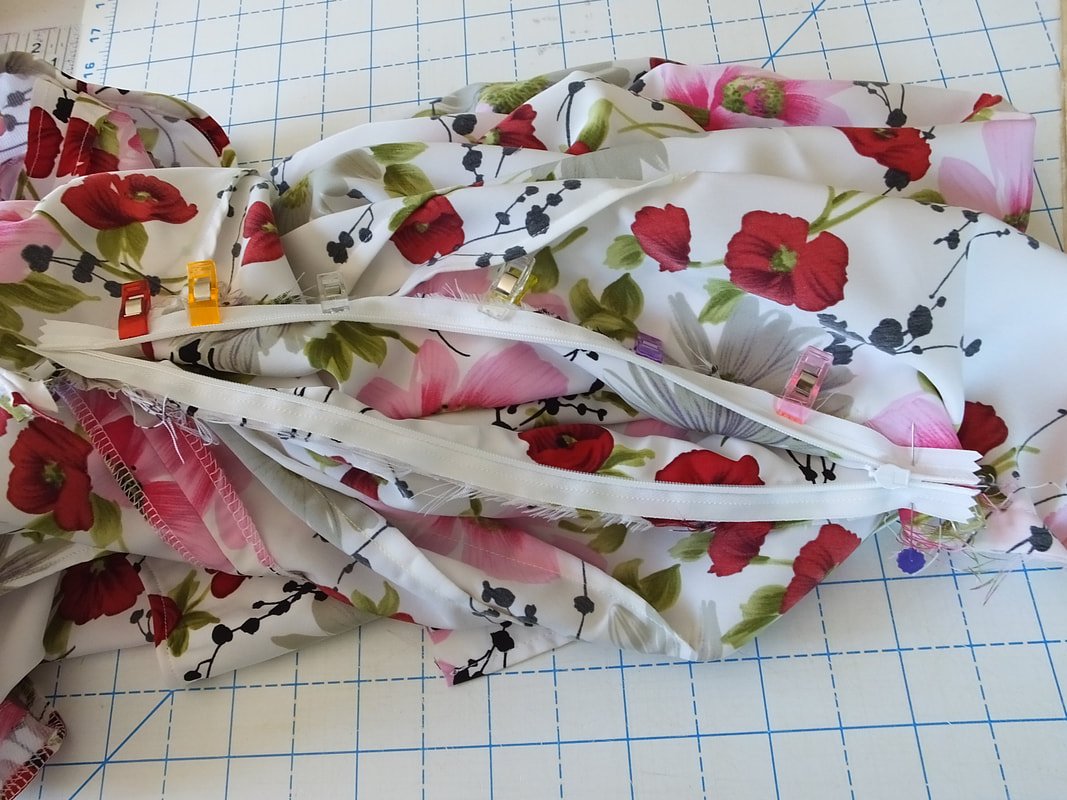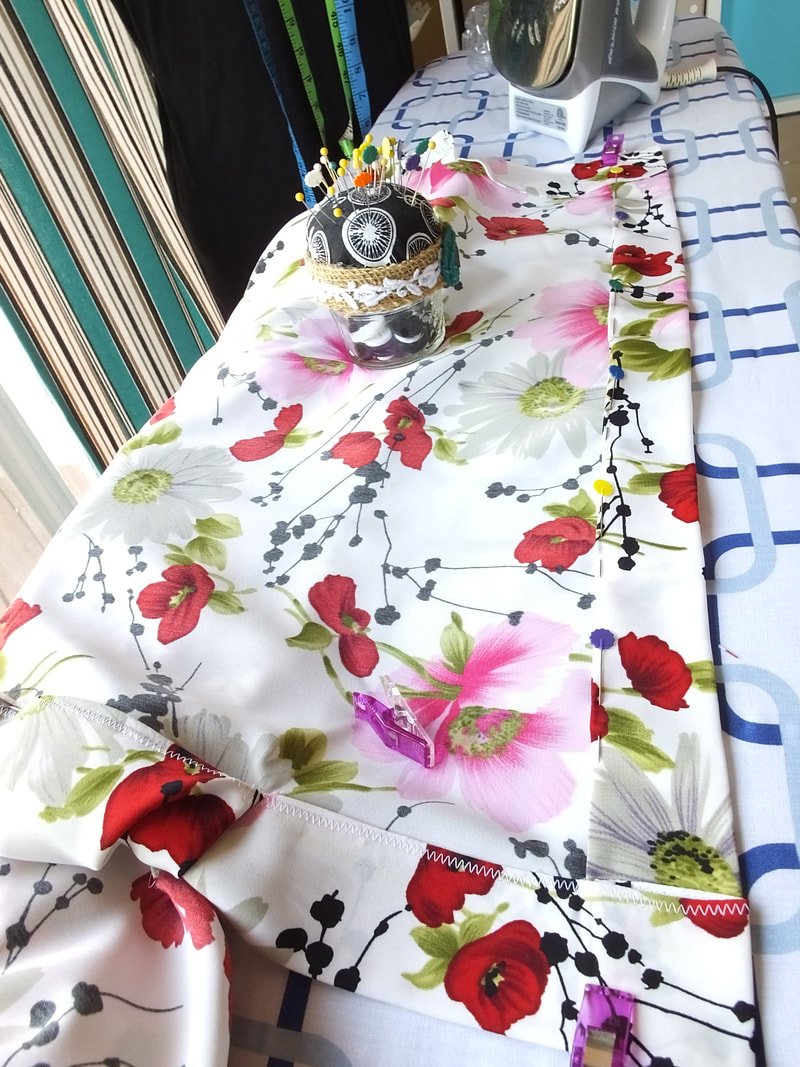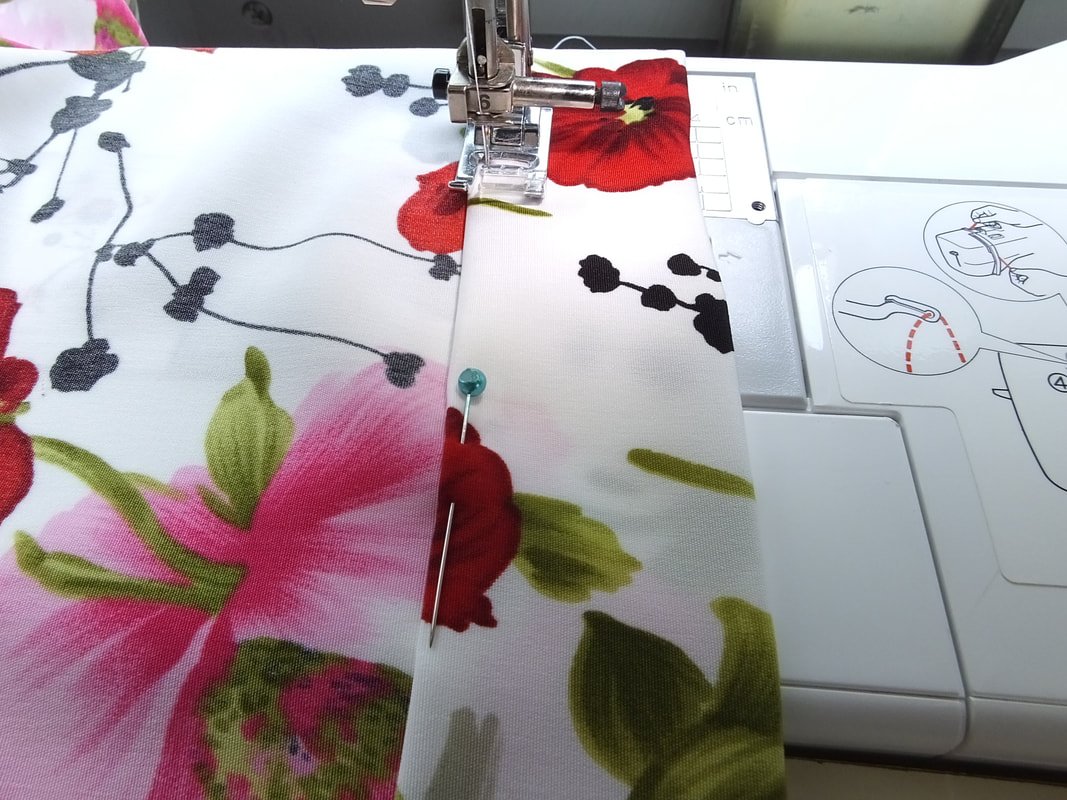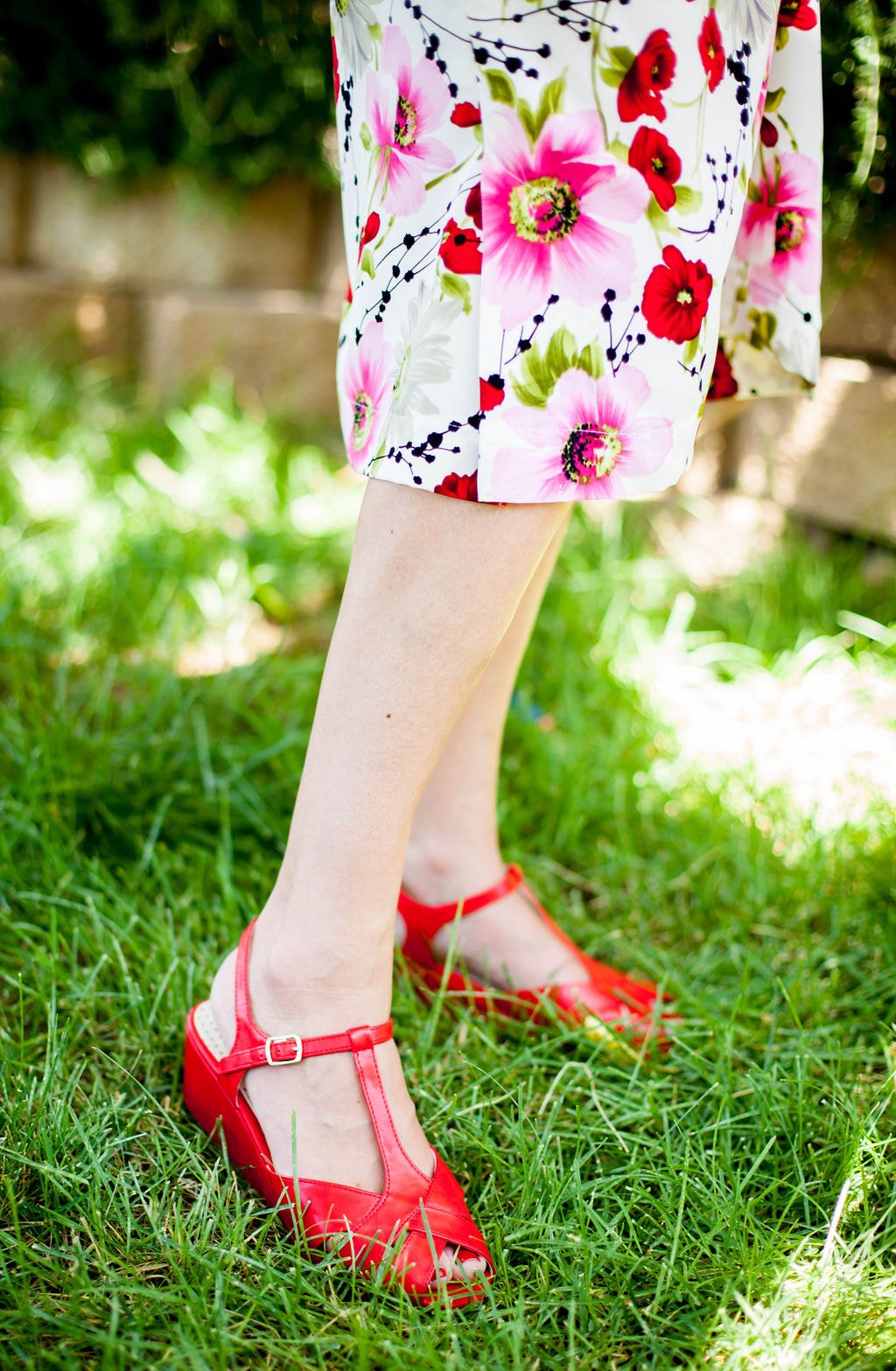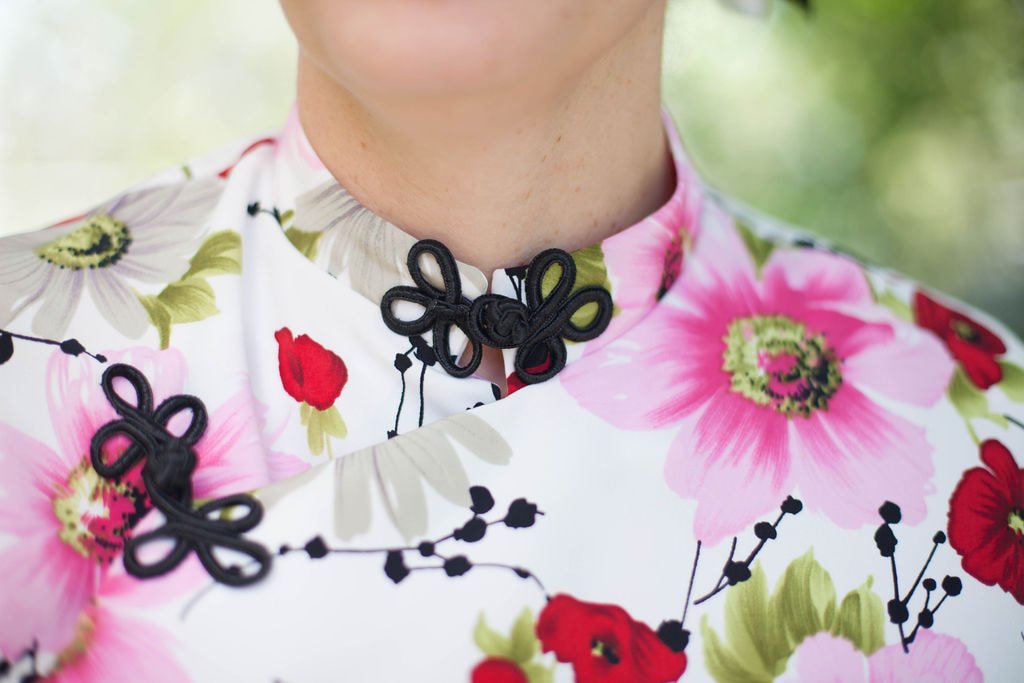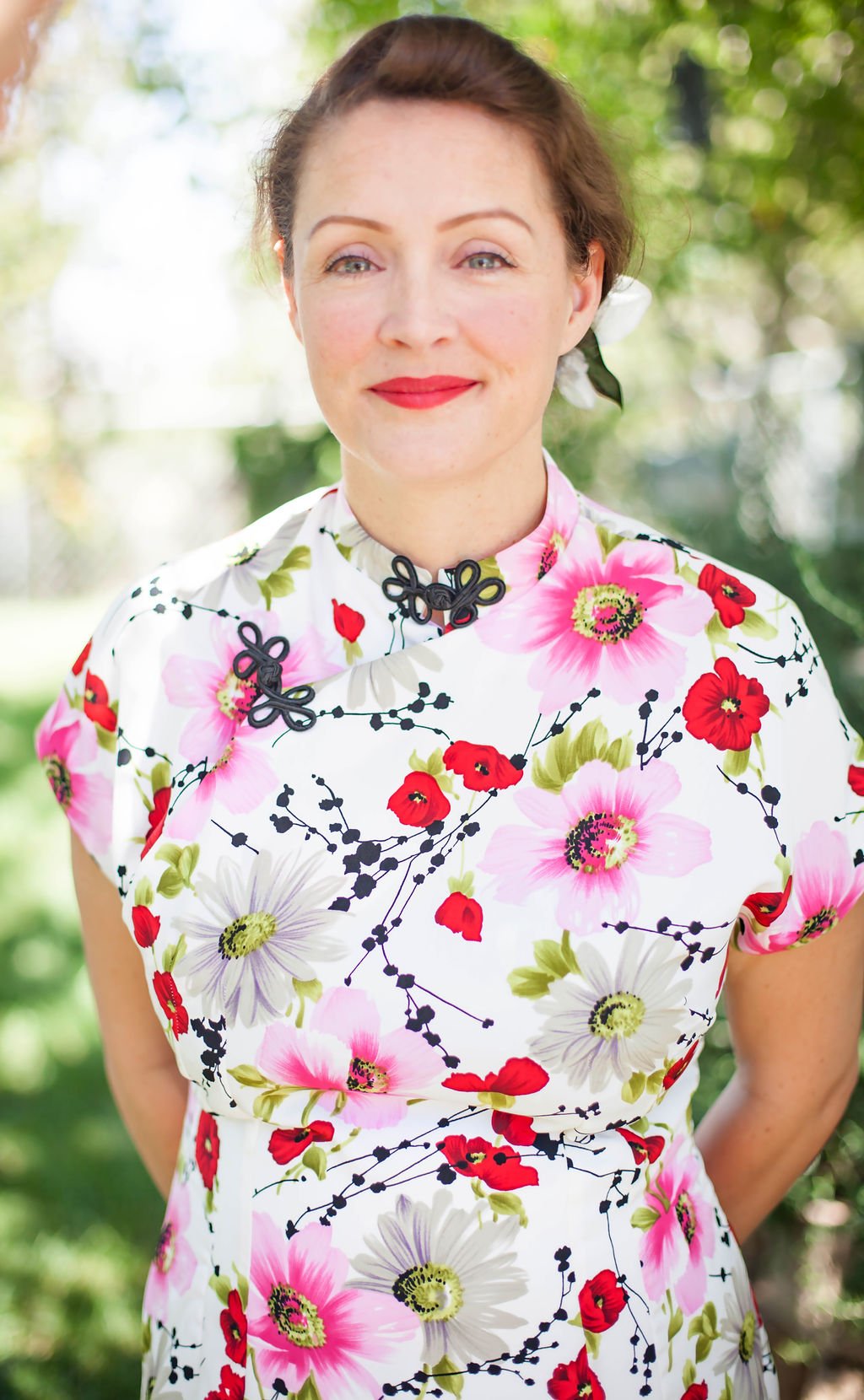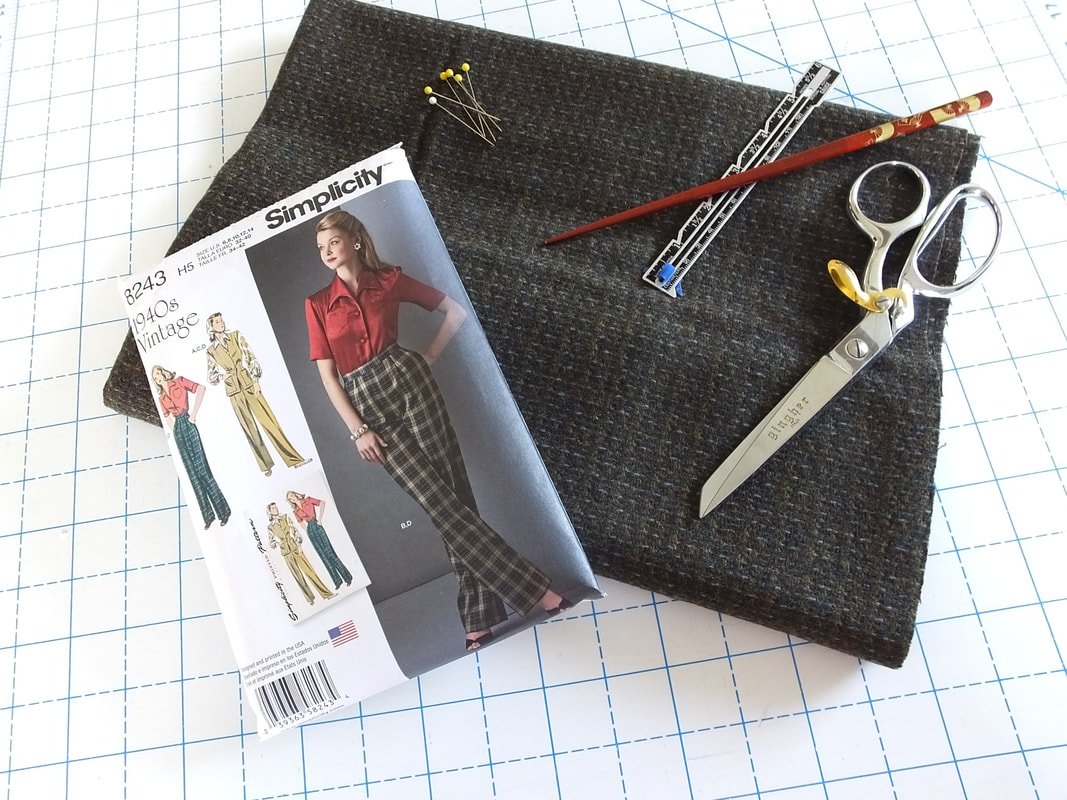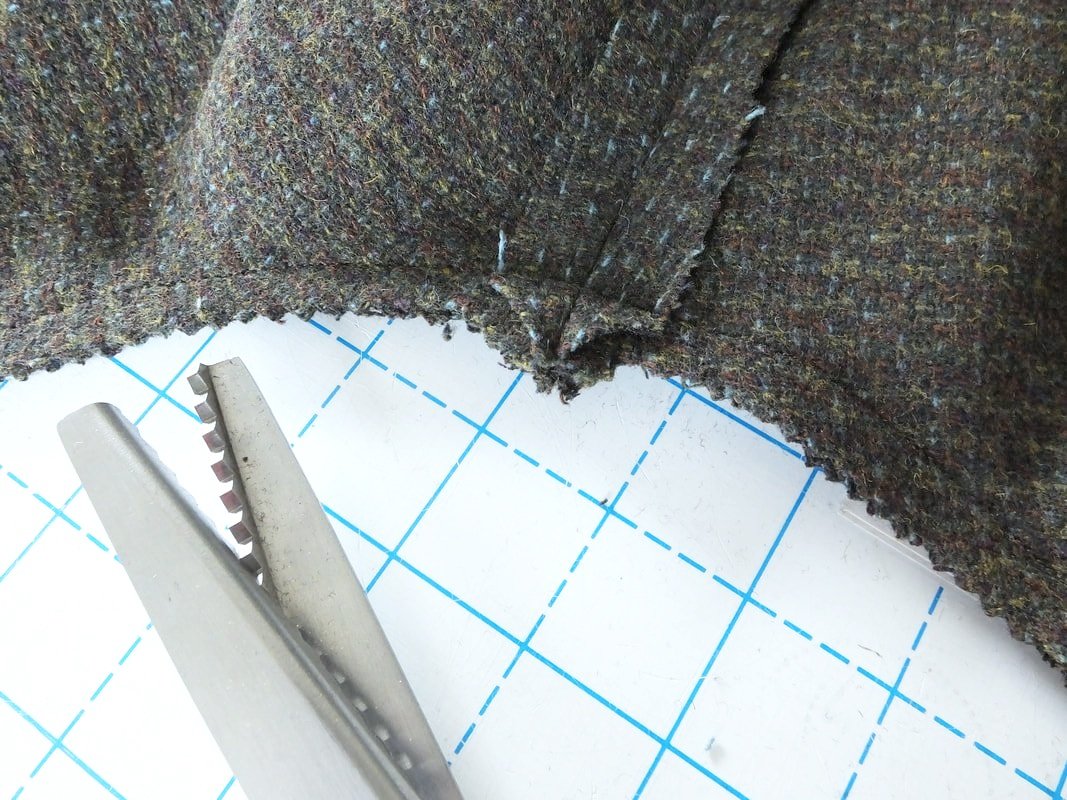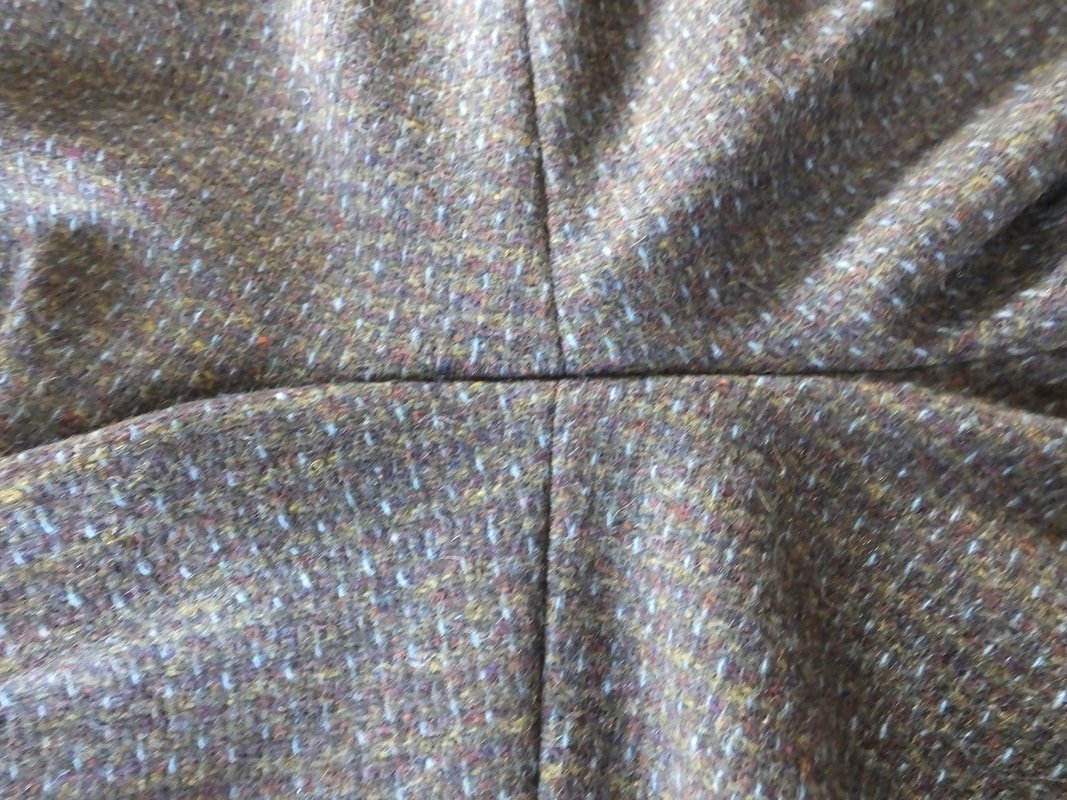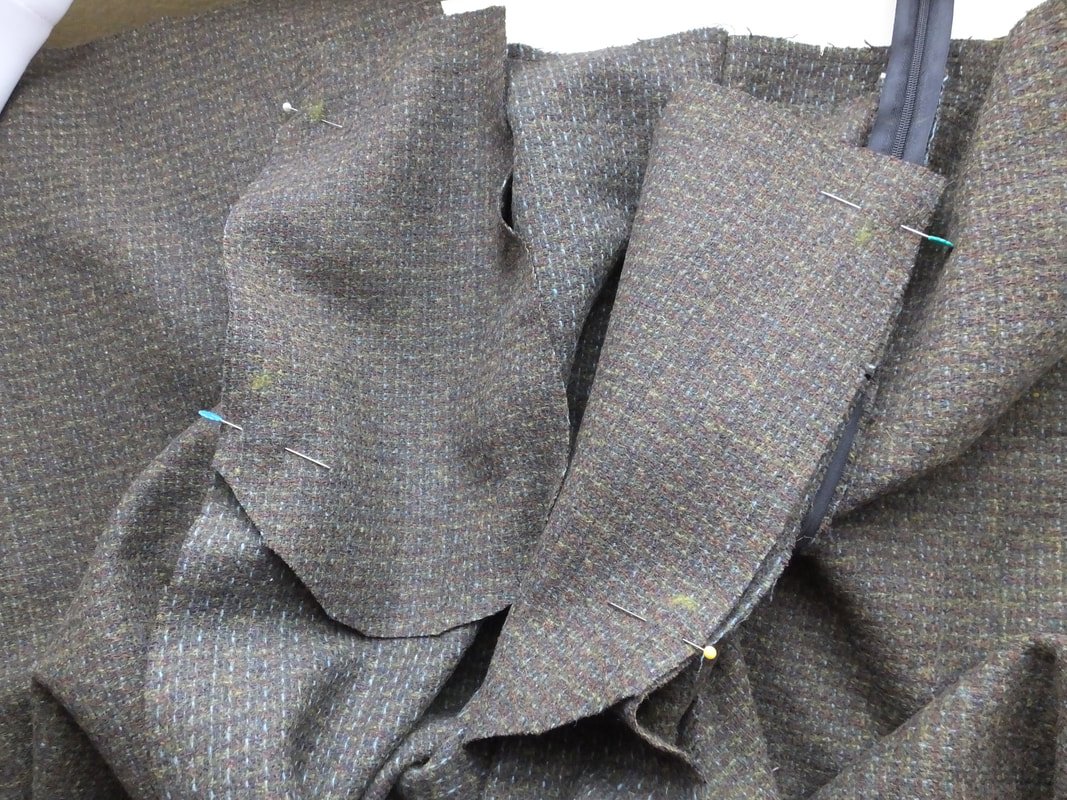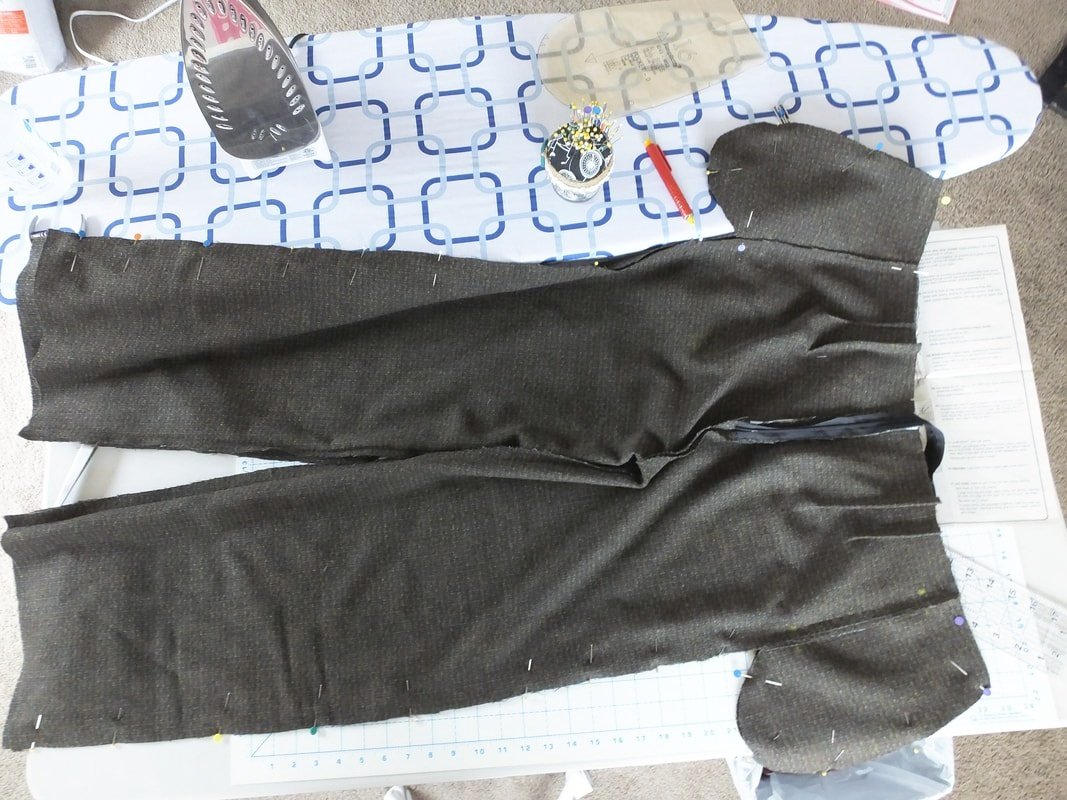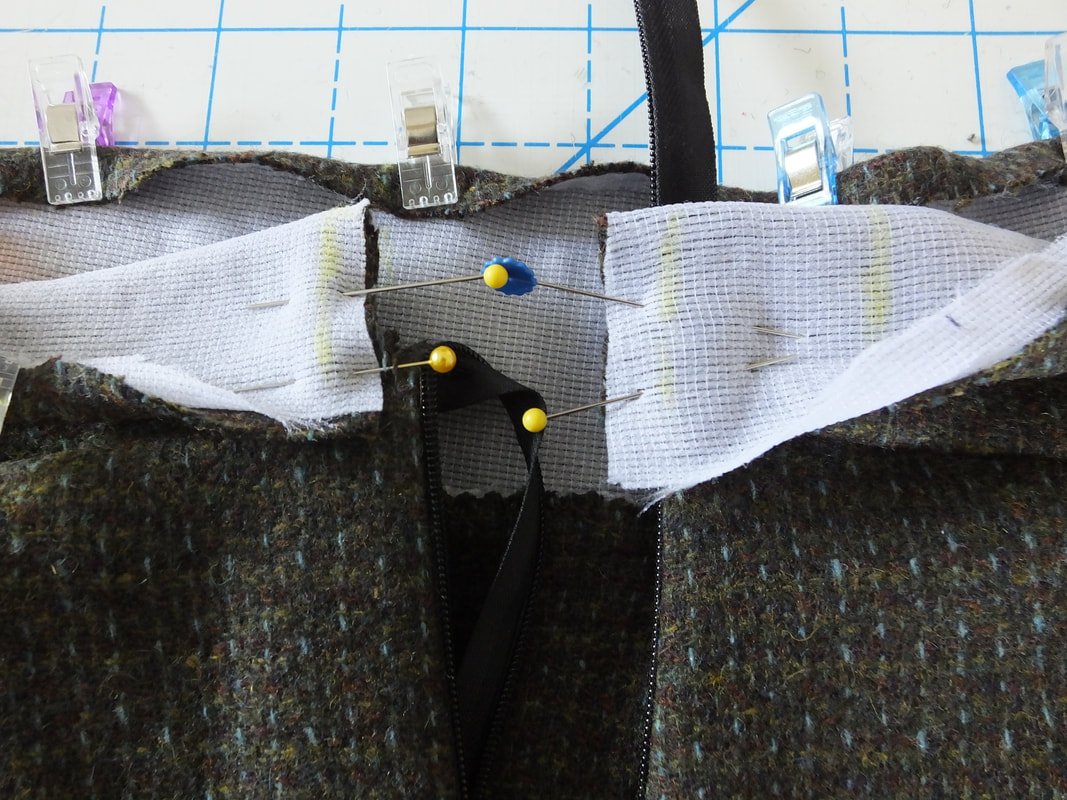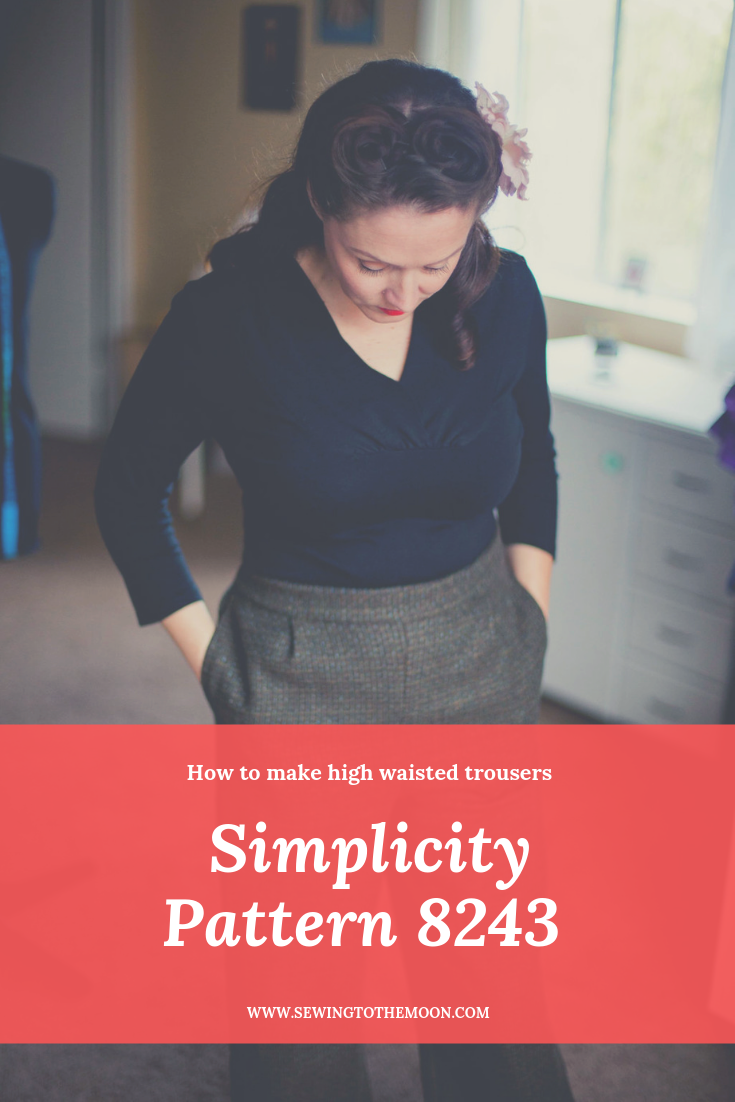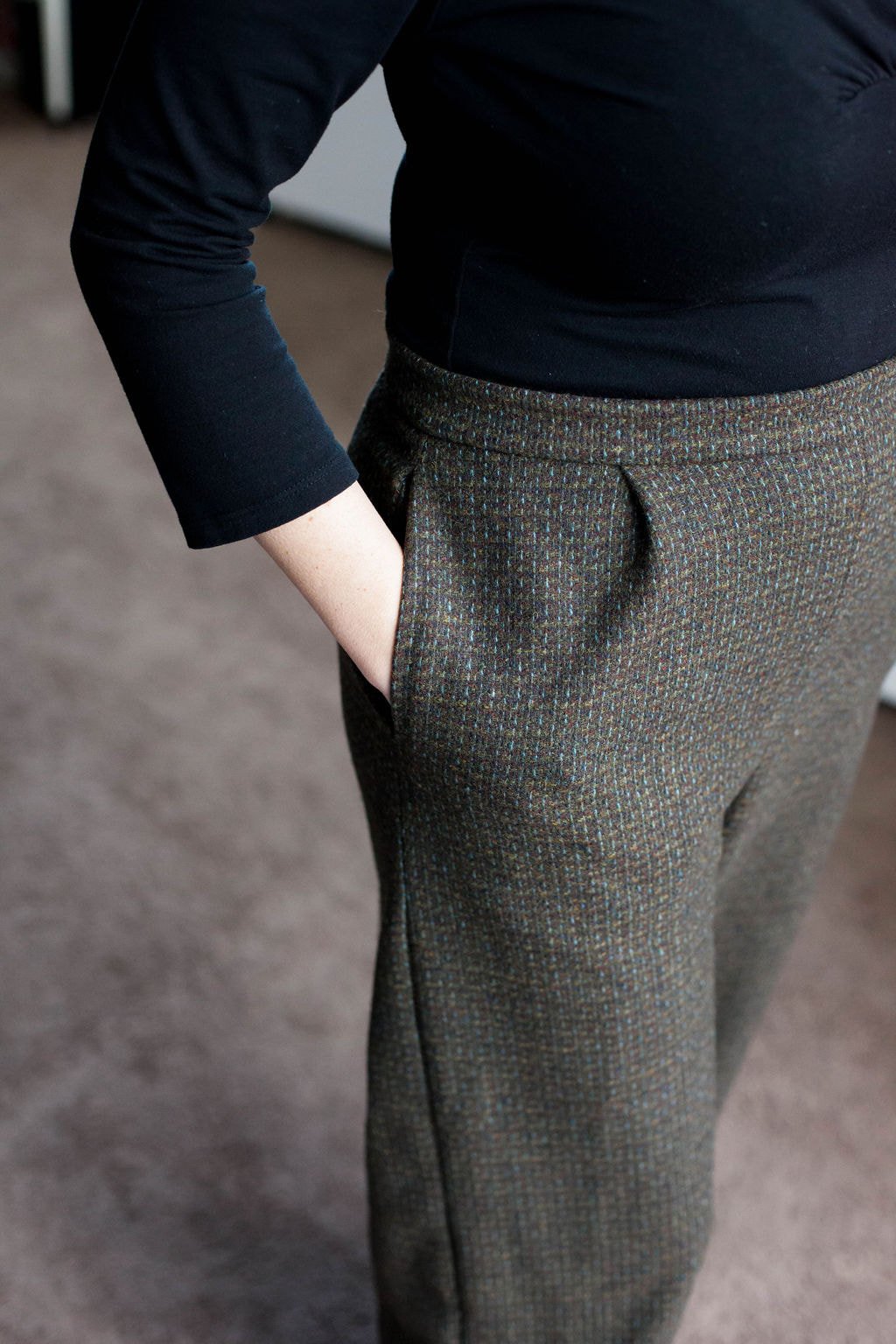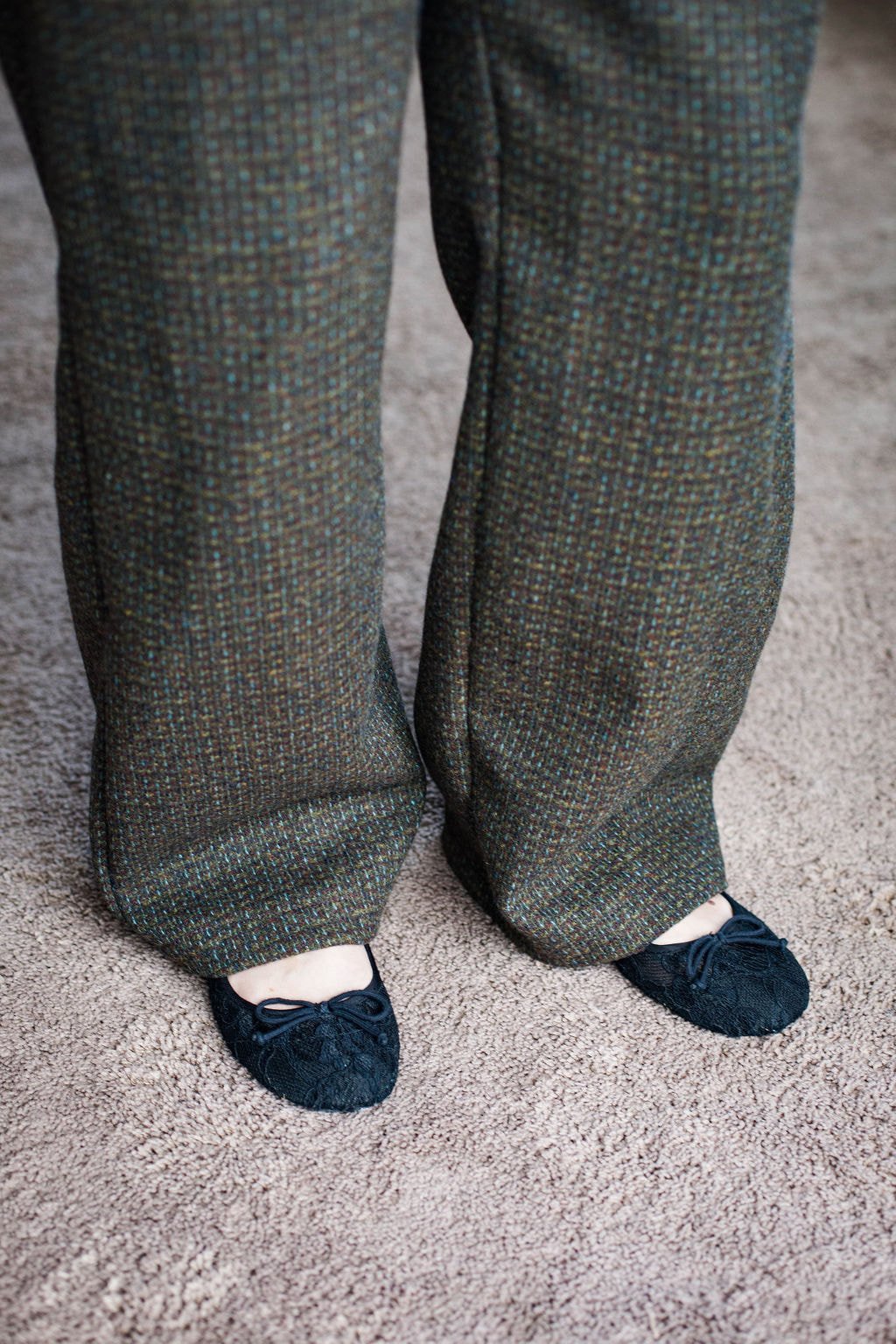Playful Butterick B6354 Bustier
How to sew plastic boning into a bustier. Butterick 6354 sewing pattern. Sew a quick form-fitting pinup style top.
Happy March!! Hope you are staying safe and healthy, and have enough toilet paper! Ha! Never thought I'd say that. Whew, what a world we live in right now. This month has not gone as planned for anyone, I'm sure. We were supposed to leave for a family cruise, but that was cancelled along with school, life, and everything else.
When life gives you lemons, get the peeler and enjoy the process.
I'm enjoying the time with my kids instead of having to drop off and pickup from school. We even have enough toilet paper. We luckily bought ours before the crazy hit the fan. LOL
I worked on this Butterick top all week and after trial and error, I finally got the sizing correct and finished it. For the cruise. That was cancelled. :/
I wanted to spend more time on the boning portion of this pattern for you guys. Do you search for tutorials before you make something new? It's nice to get a feel for things before getting your head in the game, right? I didn't see any in depth tutorials on how to insert boning. I wanted to spend time on the boning portion with this post. The pattern is pretty easy and straight forward otherwise.
This was the FBA that I ended up not needing. Ha!
Pattern time
1 yard of fabric + lining.
7" Separating zipper
Thread
2 1/5" yards of boning. I opted for plastic this time because this top will be used during warmer weather and I didn't want the bulk of the stainless steel boning. I grabbed 2 packs from my local craft shop. Each package only has 2 yards.
2 Buttons
All your sewing notions and machine
Scissors for cutting plastic boning that aren't your fabric ones.
Buttonhole foot
Zipper foot
Hand-sewing needle and thread
According to the pattern envelope, I needed a size 14. I also made an FBA (full bust adjustment) after my first muslin seemed snug. Well, it ended up being huuuge. No, I couldn't just take in a little at the side seams. This was big enough to fit the movie snacks, popcorn, sodas, and my kids!! Face-palm!
But at this point, I accepted the challenge. Game on!
"It's not sewing unless you use your seam ripper." - Me.
I unpicked the bodice, lining, and boning casings. I then re-cut to a size 14 minus the FBA. Sewed it up and it was still big. I could fit the snacks only, this time.
So, I unpicked it again and cut a size 12, no FBA. Size 12 fit well enough. I might try a size 10 next time.
After you decide which size you're going with, trace your pattern off. Grade between sizes if needed.
Transfer all the markings onto your pieces, especially the lining pieces. You'll need accurate placement lines to position your boning.
Sew your darts on all the pieces.
Pattern instructions always have you make one thing at a time, but I sew all the darts on the outer and lining at the same time. It makes more sense in my head to do it this way, but you do whatever feels comfortable for you.
After the darts are sewn, place the 2 front pieces together, RST (right sides together) matching notches and dart seams. Sew from the waist up.
Then, grab the front band pieces. Sew together and fold in half, if you haven't already.
You're going to attach this piece to the bodice you just sewed.
TIPS
I cut into the band’s raw edge after it was folded to make the sewing process easier. It helped me. You can do this if you want or not. I clipped into the raw edge 1/4".
After I sewed the band on, I stitched in the ditch of the center seam to keep it from flopping around. I didn't like the look until I did the top stitching. You can see the photo below, I didn't stitch it down at this point. It was sloppy looking. The first photo was after I stitched it down. See the difference?
Insert your separating zipper. WOW! This was my first time using a separated zipper and boy was it easy. You're making a lapped zip, so be sure to press one seam 1/2" and the other 5/8". The left side laps over the right side, hiding the zipper in true vintage fashion. Follow the pattern directions for the insertion.
Sew the side pieces onto the bodice, matching notches. Sew from the waist up. Easy peasy.
Your top should look like the photo below.
Now onto the lining part with the boning. Take a deep breath, you go this!
You want to measure and cut the strips of boning/ casing before you sew it in.
If you're having a difficult time with the boning being curled, steam the strips using your iron. Use the cotton setting with plenty of steam, and make sure the plastic is covered with the casing or a cloth. You don't want to melt the plastic. Wiggle the piece up and down, similar to how you would with a false eyelash. They should lie flat.
Sew the casing strips onto the bodice lining, leaving a 5/8" seam allowance between the casing end and the fabric edge.
Pin in place to keep them in order. Start on the top, backstitch, and sew down one line. Backstitch. Then, sew on the other side. Backstitch and sew the top short edge and pivot back to go down the long edge on the left side. So you're making a backward 7.
You need to leave the bottom open to insert the boning piece. Follow along the stitching line, it doesn't have to be 100% perfect, just try to sew a straight line.
Preparing your plastic boning.
You don't want sharp edges that will poke you, or worse poke through your new garment.
Trim the plastic boning with a pair of scissors, not your fabric scissors.
Bonus tip: use a permanent marker to number your boning pieces. Start from the left or right. This number system kept me from going insane. ;) Slightly...
If your boning is rounded still, steam the strips, and they flatten out nicely.
After all the boning is inserted, stitch the open ends closed. The pattern doesn't say to do this, but it's an extra precaution.
Match the bodice and the lining RST and sew across the top and across the bottom. Leave the sides open for turning out. Hand stitch the lining to the zipper tape.
Sew the neck strap and mark the spots for the button holes.
Try the top on and see if you need to move the markings to fit your body.
Check your manual for instructions on buttonholes if you need a refresher.
Match the button holes on the strap to the pattern piece.
Place the buttonhole markings and make them using your buttonhole foot.
Hand-sew or machine-sew the buttons into place, and you're done! Yay!!
Front View
Back View
I've started making one in zombie pinup fabric. Yes, I will wear it year-round. My inner goth gal can't resist. ;) I made a gathered skirt with the zombie pinup fabric, so I'll wear them together. Give me matchy-matchy any day!
I have a few other high-waisted pants I plan on wearing the black one with.
Have you made this top? Is it in your pattern stash? I say make it! It was really easy after I got the sizing figured out.
Share in the comments below if you plan to make this or another piece from the pattern. I made the bolero to match with this dress. The bolero is super duper easy!
As always, thanks for hanging out with me. Keep your seam ripper sharp and your bobbins full!
XO,
Annette
Butterick Dress Pattern B5882
Sew a fun and fancy dress with some vintage style. Butterick 5882 dress pattern created by Gertie.
Butterick B5882 dress pattern
I had this fancy-looking fabric lying around and used it for the Butterick 5882 dress pattern. It turned out well enough but, next time, I'll make some adjustments.
My family and I are going on a cruise this spring and I needed a fancy dress. I wanted to make my own dress. Cue the Butterick pattern that I've had in my pattern arsenal for a while. I had yards and yards of fabric left over from a Halloween project.
I decided to make the B5882 dress because I had nothing to lose. My fabric wasn't anything I had an attachment to so, I just dove in! I did make a bodice muslin first because I almost always have to do an FBA. But, no FBA was needed this time. Shock and awe!
Let's get sewing.
Supply List:
Sewing machine and all that jazz
14" zipper
Boning
Interfacing
Fabric and lining
Patience
Grosgrain ribbon
Hook and eye set
Matching threads
Butterick Pattern B5882
I made the muslin, tried it on, and it fit! Hooray! Next was the cutting of the fashion fabric and lining. I went in head first and full of confidence.
The muslin fit pretty well. I suggest making a muslin for this dress. If not only for the fit, but how the shelf bodice will go together.
That whole folding thing was super simple with muslin fabric. Not so much with Taffeta. It was fiddly and didn't press how I expected. So, in the end, I went with however the fabric behaved and called it a day. You'll notice in my photos at the end that the strap still doesn't lay flat.
Make sure you stitch and pivot at the exact dots for the strap. It'll cause issues down the road if you don't. *I learned my lesson.
Press the pleats in place using a tailors ham. It helps to shape the pleats.
Sew one cup at a time. This part was pretty easy. Go slowly and follow the curve.
Boning Time
I had never used boning before, but have made my own bras. In the future, I want to dabble in corsetry for myself. I own a few corsets and love them. I love how they squish everything into place and keep it there. I didn't buy the pre-cased plastic boning as the pattern recommended. Instead, I ordered yardage of spiral steel boning from Etsy. I also ordered boning casing, and the little metal caps that go on the ends so you don't get poked. I was intimidated, but it ended up being pretty darn easy!
Excuse the lighting, I did the boning part at night. No pun intended ;)
Zipper time!
Grab that zipper and foot. The pattern calls for a lapped zipper which is similar to a regular zip, but the measurements are changed up a little bit.
You want the left seam to be smaller than the right seam so the fabric folds over and conceals the zipper. I always love a lapped zipper because they're easy and a nod to vintage style.
Make sure to use a zipper foot.
The left side is sewn right at the zipper teeth. The right side will have more fabric so that when the zipper is closed, the teeth are hidden.
See how the fabric is folded over when I stitch the left side for the lapped zipper.
The left side of the fabric is folded over. This is the lapped zipper and my favorite type of zipper.
I didn't take any more photos after the zipper. All that was left to do was the skirt. Follow the directions and match the notches. Hand sew the lining to the zipper and hand stitch the bodice lining to the skirt lining.
Let the dress hang for 24 hours. Sew the hem by sewing a 1/4" seam line around both the lining and dress. Fold up the edge and press. Then, fold it up again and stitch. You'll have 3 layers. You're basically creating a narrow hem.
I added the waist stay last- I completely forgot about it until I saw the ribbon I had cut, and draped over my sewing cart. Haha!!
I tacked the ribbon at the waist with a few stitches where the boning seams were. Sewed on the hook and eye and it was done! Time to take all the pretty pictures.
Ta-da! Dress is finished. Ignore my face. LOL
If you've made this dress or do make it, please tag me! I want to see your fabric choice and version. This dress taught me some new things and I really enjoyed making it. Aside from the pesky folding of those cups, it was fairly easy. Don't be intimidated by the boning like I was.
As always, thanks for reading and hanging out.
Happy Stitching,
Annette
I'm going to hand-sew a few hidden stitches to keep the neckline strap down. It likes to pop up.
This is the back view. It's a form fitting dress but, it's comfortable.
Wanted to show the gold lining. The whole dress reminds me of Mardi Gras. If I ever go, I'll be sure to pack this beauty. :D
How to Sew Simplicity 8244 Cheongsam
How to sew a cheongsam. Simplicity sewing pattern 8244, sew along. This dress was a labor of love and turned out beautifully.
Have you ever been scared to sew something? Too nervous to start because you didn't know where to start? Let me share a little story with you. Grab a cup of tea, this is a long one. And, this is also the dress that made me start a sewing blog.
Simplicity 8244, a 1950s style dress pattern. Fabric was from JoAnn.
I picked up the Simplicity pattern and beautiful floral fabric with a vacation in mind. My husband and I were going away for a few days. I wanted to make something pretty and different.
When I sew something for myself, I like to look at other people's versions. It’s how I pump myself up. LOL
I searched the interwebs to find any and every tutorial, on how to sew up Simplicity's #8244 pattern. I didn't find what I was hoping for. I found a few pattern reviews and photos, but no tutorials or step-by-step instructions. I messaged a gal asking a few questions, but she didn't have the answers I needed either.
Hesitantly, I traced the pattern onto my paper (here's a list of my go-to sewing tools) and transferred the markings. I always need to do a FBA (full bust adjustment). How was I supposed to make one with this asymmetrical dress? After staring at the pattern for what felt like days, I shut down. I rolled up my traced-off paper and set it aside. For one year, exactly.
Not sure what lit a fire under me, but I decided to pull that rolled-up pattern out of hiding and give it another go!
I made a muslin using some old Halloween costume fabric on hand.
I sewed up the muslin, making sure to include the darts, side, and back seams, and any other important areas. I did not attach the collar or zipper. It's a muslin, so it was for the fit purpose only. I HIGHLY recommend making a muslin for this pattern. You may find that you need a few simple adjustments.
I found that my bust fit pretty well. *I did use my high bust measurement. I have a 5-inch difference between my high bust and regular bust. FBA to the rescue.
I made the short waist adjustment- because I have no torso. Ha!! Thanks, Mom. ;)
I also did a forward-sloping shoulder adjustment as well. Bad posture FTW!
Nothing else was needed. I transferred those measurements back to the pattern piece and traced out my pieces onto the pretty fabric.
Gather everything you need:
Fabric
Pattern
Interfacing, matching thread, needles
Frog Closures or buttons
Piping. I opted out, but you may want to add the piping detail
Sewing machine, etc.
All your favorite pattern tracing and cutting tools
Patience and a good night’s sleep
Now that the fitting info is out of the way, let's dive in and make this beautiful traditional Chinese dress. I did a little research on the dress, thanks wikipedia. If you want to find out some more information and the dress history, click that link. Youtube has some amazing videos on how the dresses are made as well. I love the internet.
Trace out the pattern onto your favorite paper. Don't forget to transfer every marking, there's a lot with this pattern.
I didn’t have a table big enough, so I traced it off on the floor. Ouch, my poor knees.
This was a lot of dress, make sure you have a large space to lay out the pattern. I chose to do this on the floor. Cue the angry sewing Gods. >: )
Once everything is cut out, and your marks, darts, and hemlines are transferred. Cut out the fabric. **Pay close attention to the pattern layout on the tissue paper. You don't want anything backward or inside out. This is very important. you'll see why later.
Sew the fisheye darts.
Sew your fisheye and bust dart first. Fisheye darts are pinched in the middle and sewn up. Knot by hand. Go back to the middle and sew down to the opposite end. Knot by hand. Press the waist darts towards the center. I love this style of dart, they are so flattering. A tad tricky for your first time, but once you get the hang of them, you’ll love them.
Match up shoulder seams and back center seam. Stitch. Press open.
So far, so good. Right? Moving right along. It should look more like a dress at this point.
Facings
Now for the fun part. The facings. All the armhole and neck facings. So many facings. And collar pieces. Wheee!! Keep them separated by attaching your pattern pieces to them with a clip or pin. It will make you scream less. I promise.
Attach all the facing pieces together following the pattern directions. I used the picture on the pattern to make sure I got it right. It looks wonky, but it works. If you didn't iron the interfacing on earlier, do it before you sew the interfacing snake. That’s what it is, it’s a facing snake. LOL
Attach the facings together at the seams, be sure to match the notches. This is very important for the facing to lay correctly and flat. Sew the seams together, and it should resemble a funky snake. Now you're going to attach the facing snake to the dress. Matching notches again, and following the curves and angles.
Side note- The pattern has you do a hem on the facing, but I wished I would have just serged the edge. It creates a little more bulk than I like. It doesn't bother me enough to rip it out though. #lazysewis
I didn't take a photo, but you make the collar before applying the facing snake. The collar is sandwiched in between the dress and facing snake. It has basting stitches to hold the 2 layers together.
See the collar sandwiched in there? If you opt out of the collar, pay no attention to this picture.
Sew the three layers together. Understitch the collar and facing area.
As long as the facings and collar went in well, it should look something like the photo. If you opted for the pretty piping detail, that would have gotten sewn in between the facing and dress seams as well.
The front of the Cheongsam is looking pretty good so far.
This dress was a labor of love. I sewed a little each day, without rushing. I definitely took the slow sewing approach to this one. And, if you need to take a break, take it. If not... forge on!
Next up, stitch the 2" small area to enclose the flap part. Those are the technical terms in case you're wondering. I think they have you do this to ensure nothing is accidentally seen, skin-wise.
Sew this small area around the flap part.
Armhole facing time. Apply your interfacing if you haven't done so already. Finish the edge as you did with the neck facing. I serged the edge instead of an actual hem. I learned after making the front facing. Attach to the armhole matching notches and follow the curve.
This is where the pattern placement messed me up. Well, where I messed up. I had to cut out so many armhole facing pieces. I kept doing it backward. Ugh. I turned the machines off, unplugged the iron, and walked away. I returned the next morning with a clear head. Sometimes that’s the only thing you can do.
After the facings are sewn to the armholes, the instructions have you start the vent openings.Oh boy, I was so confused at this part. I read the instructions over and over and over. I've never made a vent before, so I went to ye old YouTube.
Below is a video of how to create a vent by Professor Pincushion. She has fantastic videos on almost everything, so check out her YouTube channel and website out.
I followed the video and made both vents with the snip at the backside of the dress.
You can see the stitching line on the outside if you look closely.
After that was all sorted, I was a happy lady. Whew! Thank you Professor Pincushion; you saved the day.
I put in the side zipper. You can insert the zipper before or after the vent. It doesn't really matter. But, you do need an invisible zipper foot.
It makes a pretty zipper that hides secretly in your side seam.
Grab your invisible zipper and invisible zipper foot. I like using clips for this. Attach it backward, and if you use the correct foot, it'll be a breeze. The foot is designed to grab and push the zipper teeth away from the fabric. The teeth then refold back to make a beautiful seamless zipper.
Sew up the left side first.
After you sew up the left side, backstitch and go to the sewing table.
Pin or clip the right side of the zipper tape to the seam fabric. It looks like this when half sewn. See how it's backward. You have to flip your sewing brain inside out to do these zippers.
Sew the other side down. Hold the tape and work with the machine while I slowly sew the zipper.
Inserting an invisible zipper is easy once you think of it as going in, backward.
Wow, all that is left to do is the bottom hem. The pattern suggests a 2" hem. So, that's what I did. I serged the raw edge, then turned it under, and under again. The pattern calls for hand stitching, but at this point, I had enough of this dress. So, I tossed that sucker on my machine. I usually don’t hand-sew anything unless I absolutely have to.
Sewing the hem.
A little behind-the-scenes shot. Phew! Glad the dress is done. Oh wait, I need to sew on the frog closures by hand. Cue a tear and a Netflix show. LOL.
Use a clip to hold the collar together. Pin each side of the frogs to the dress exactly where you want them. Thread that hand needle and get to work. I should have used some interfacing behind where I sewed. Ugh. Stitch them both by following the pattern instructions. It looked like one was at the corner of the front bodice flap and another at the collar. That's where I put mine. Once these beauties are on, you should be done! Hooray!!!
Overall, I love this dress. The fit is amazing. It's form-fitting but loose. Does that even make sense? I like the length too. I'm glad I decided to just dive in, after a year of it staring at me... from the corner of the floor. I don't like labeling sewists as beginners, advanced, etc. But, I think this dress would be best for someone who has a few garments under their belt already. It was time-consuming, and the pattern layout was tricky. Just take your time, and you'll be a vintage goddess in no time.
The only thing now is where I'm going to wear it. Hmm...
Photos below are all by Erica Lancaster
Well, that’s it. I hope you make this dress if you’ve been on the fence for a while. If so, tag me on Instagram @sewingtothemoon. I want to see your version. I love this dress and can't wait to wear it everywhere, once I figure out where to wear it.
Happy sewing,
Annette
Simplicity 8243 Pants
Easy pants pattern with a 1940s style. Make a pair to fit your body.
Hope the weather is treating you well. In southern California, we've been lucky enough to enjoy warmer days and cooler evenings lately. As I type this, I'm listening to the birds sing and the leaves flutter on my Mulberry tree. The 3 tier pond in my backyard is bubbling away. This is what heaven sounds like to me-peaceful and serene. I live in southern California, but am not in Los Angeles. I'm far from it, actually. We live on a quiet little dirt road. I don't hear cars drive by. No basketballs are bouncing in a nearby driveway. I do however hear the occasional dirt bike ride up and down the hills.
I love where I live. I'm feeling extra thankful today for the beautiful things and landscape that surround me. I am also thankful you’re here and reading this.
Without further ado, grab a cup of coffee or tea, and let me walk you through Simplicity's pants pattern 8243 a.k.a. my favorite pair of pants.
photo by Erica Lancaster
This pattern was easy to cut. Easy to sew. I had zero fit issues as well. How often does that happen, you ask? Um... never! But, a tiny disclaimer, I don’t have hips or a booty. So, pants are easy to sew, for me. Tops are a whole other story though.
I bought the pattern on sale a few years ago, and it's been in my stash along with this fabulous tweed fabric. I made this pair of pants at the end of winter but, was able to squeeze a few wears out of them before summer hit. I live in the high desert, and our weather can be finicky.
These pants are wide-legged and high-waisted. They are perfect for any 1940's fashion-loving gal. The pattern Simplicity 8243 has a shirt pattern I have not tried yet.
I did not prewash the fabric first because tweed is made with wool fibers. I planned on dry-cleaning these after a few wears. One thing I did not think about before I made them was the fact that they are made with tweed which can be itchy. The fibers don't bother me at all, luckily. Although next time I sew with tweed, I'll make a lining. Eeep!!
This post isn't a step-by-step tutorial, but more of a simple guideline. I didn't take photos every step of the way, but hopefully, there are enough photos to inspire you to make a pair.
Gather your sewing tools and let's get started.
Cut out the pattern pieces according to your measurements. For pants, I always stick with the waist measurement. I don't have hips, so that's not an issue.
I stabilize anything that will need interfacing at this point as well.
Sew the darts on both front and back pieces.
Sew your stay stitching along the top.
Now, apply your invisible zipper. This always feels wonky to me. I use my chalk pen to mark the zipper tape. When I sew the other side, I match my markings and I get a seamless invisible zip every. Single. Time. #sewinghack
Invisible zipper set up
Mark your zipper tape with chalk
Pins will be your best friend with all zippers. I pull mine out at the last minute. It also helps to line the zipper up with the edge of the fabric.
Your invisible zipper shouldn't show at all. If it does show, take a sip of tea, eat a cookie, rip it out, and try it again. Pay no attention to my stay stitching that is uneven. LOL
Once your zipper is in, it's time to sew up the crotch seam. You're going to sew the inseam area first. Again, pins are your friend here.
After you sew up the front and back inseam, trim your seam allowances. I used pinky shears for this pair. They have a nostalgic feel, so I didn't serge them. I also trimmed the crotch seam to create less bulk.
The pattern has you sew the outer seams and pockets in one swoop. I started following the instructions but then went rogue. I like to clip the inside corner of my pockets to allow them to move freely inside the pant leg.
Time for pockets. Follow the pattern instructions, or, if you have your own way of doing pockets, choose that route. I did my own method. The instructions were a bit confusing for me.
After the side seams are sewn up, it's time for the waistband. We're almost done! Woohoo!!
Attach your waistband and then fold the seam allowance under. I used clips because tweed doesn't really hold a crisp edge.
I marked with chalk where I needed to fold over the waistband seam. Attach the waistband to enclose the raw edge.
Try the pants on and mark where you want your hem to be. I had my husband help with this part. My worst fear is having uneven hemmed pant legs. Ahhh, the horror!!
Give it a once-over press, and then apply the hook and eye. I cut the waistband a tad short but was still able to finagle it. The hook and eye worked beautifully. I hand-sewed that portion while I sat in the car waiting for after-school pickup.
I wanted to wear these pants to a birthday party that same night. It was a cold night and the wool tweed kept my legs warm.
Oh, the sewing life. Am I right?
Overall, the pattern was easy to make. The tweed I chose has multicolored fibers. They are brown or green depending on the light. So, I did find it difficult to find a matching top. I love the fit and love how easy they were to make. I can’t wait to make a few more pairs.
Have you made these pants? Is the pattern in your stash or on your list to purchase? I definitely recommend sewing these for a quick project. I see more pairs of these in my future.
Photos of me are by Erica Lancaster
Thanks for hanging out and following along. Leave a comment below if you love these. Sign up for my newsletter to stay updated on my posts as well.
Hugs,
Annette



